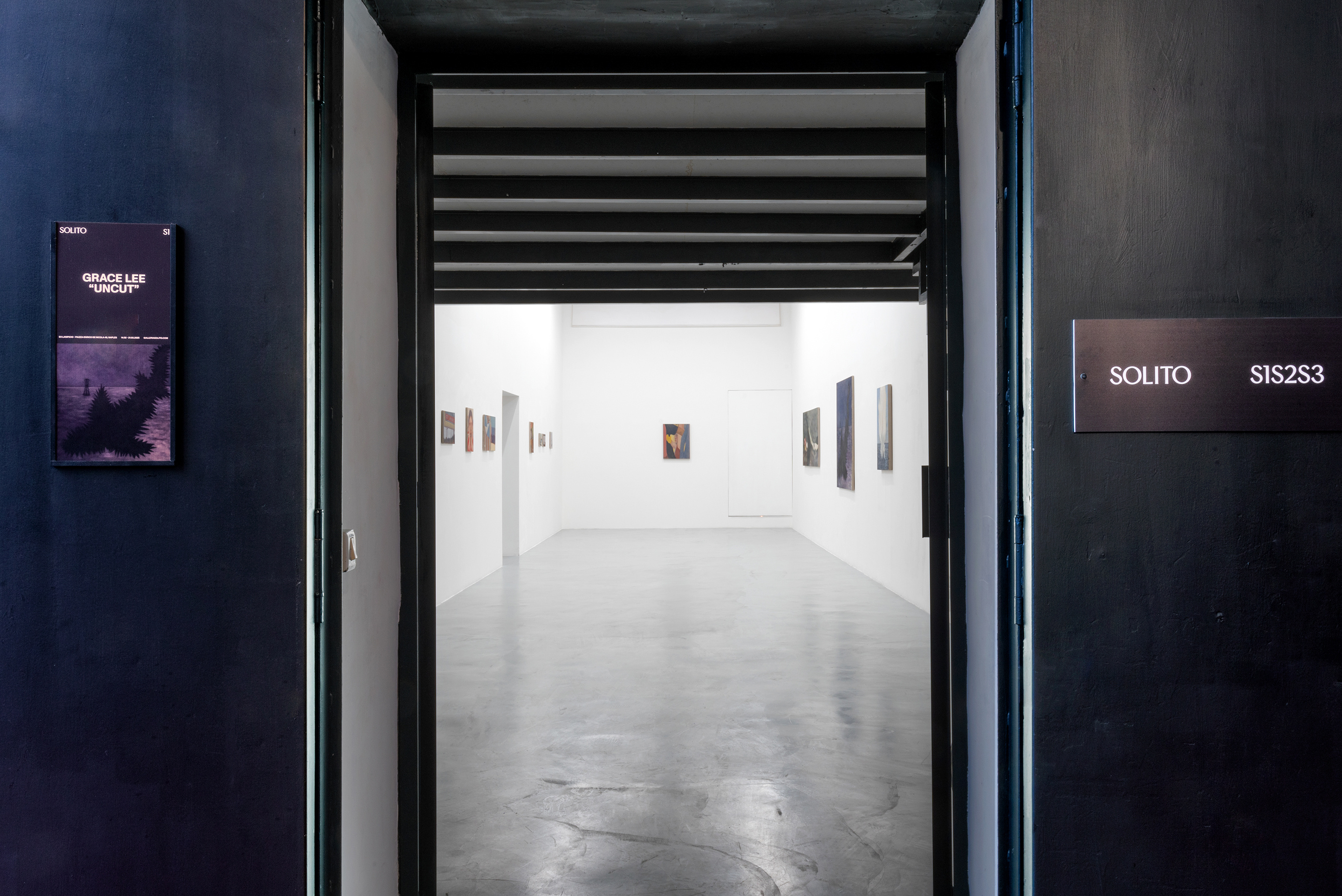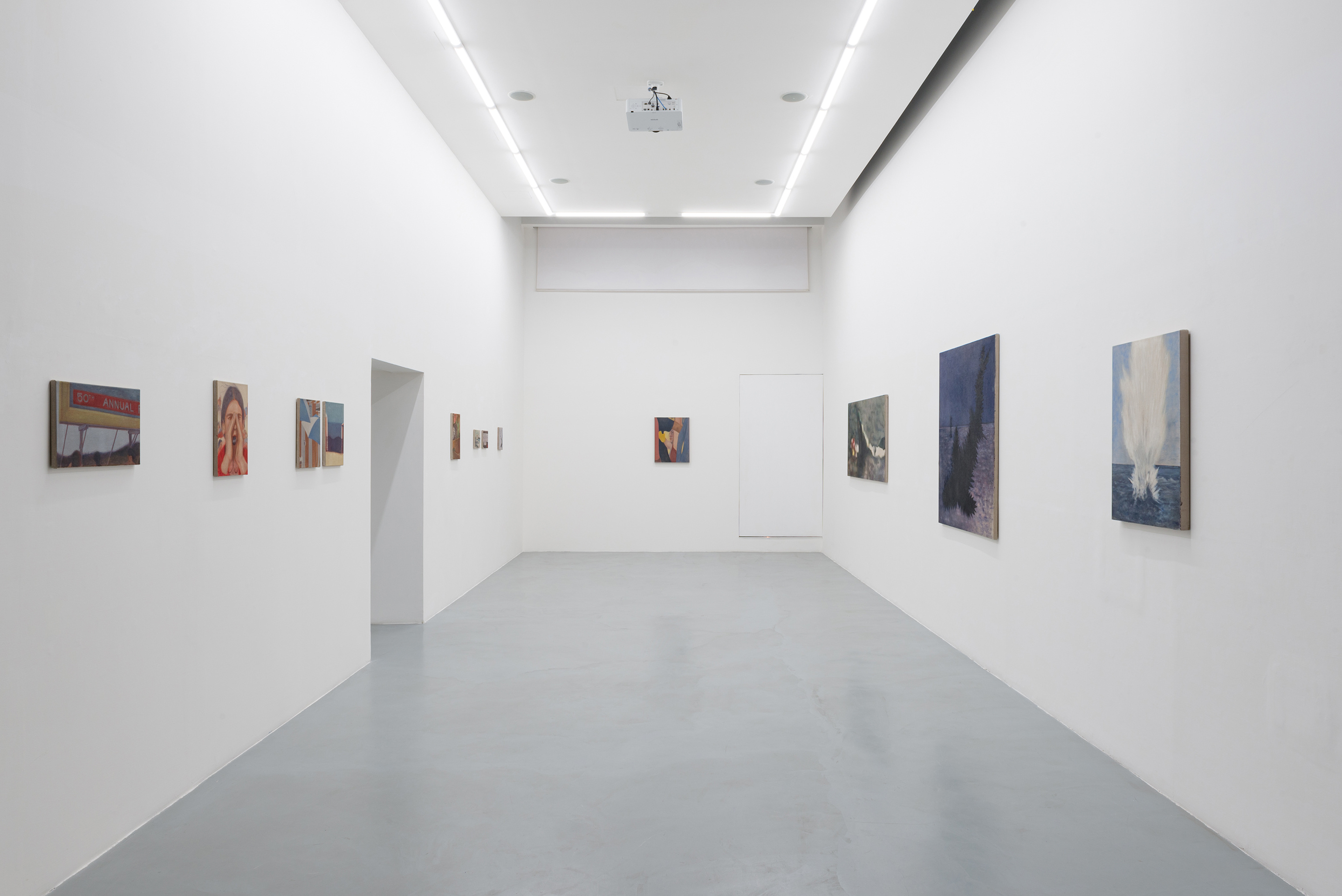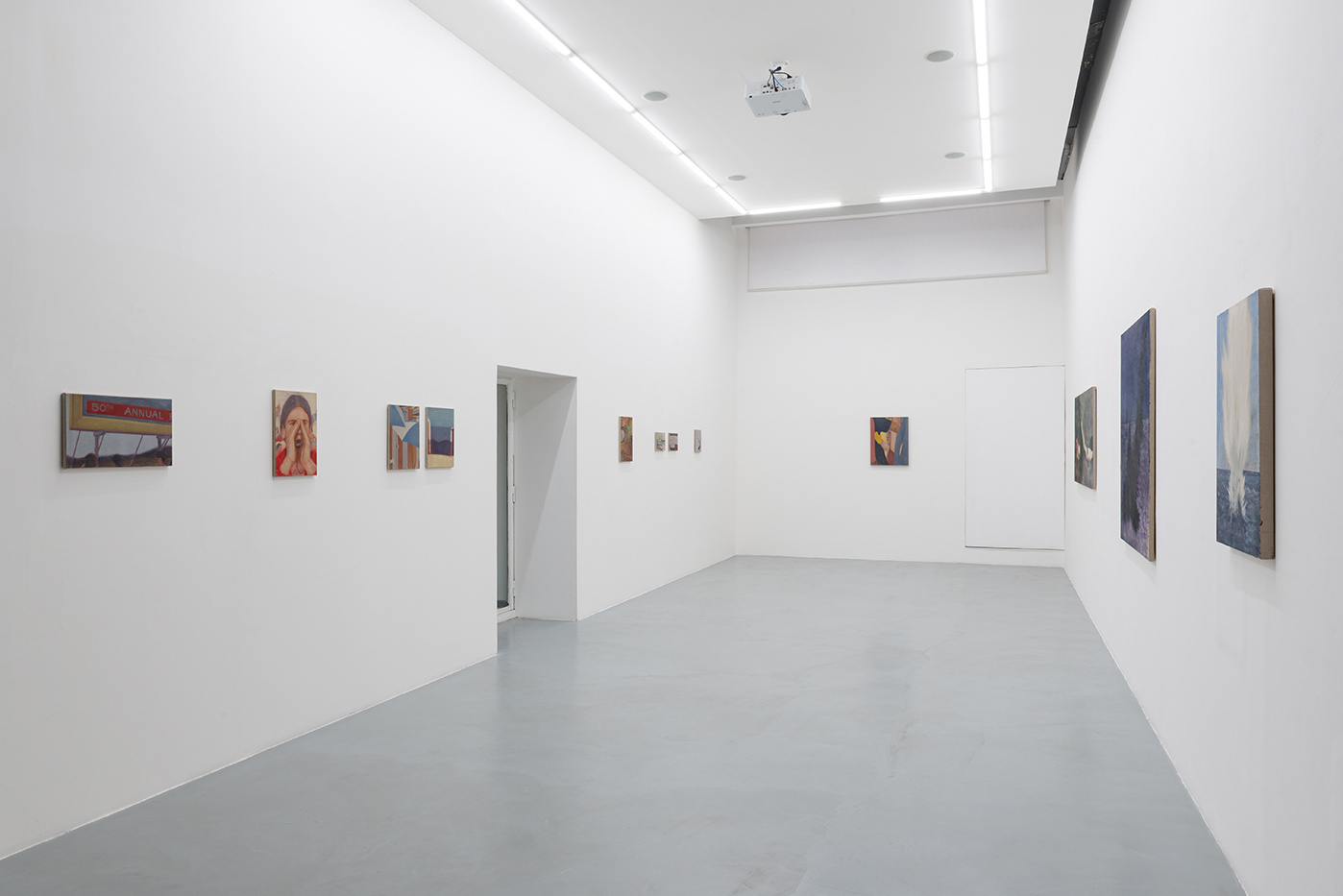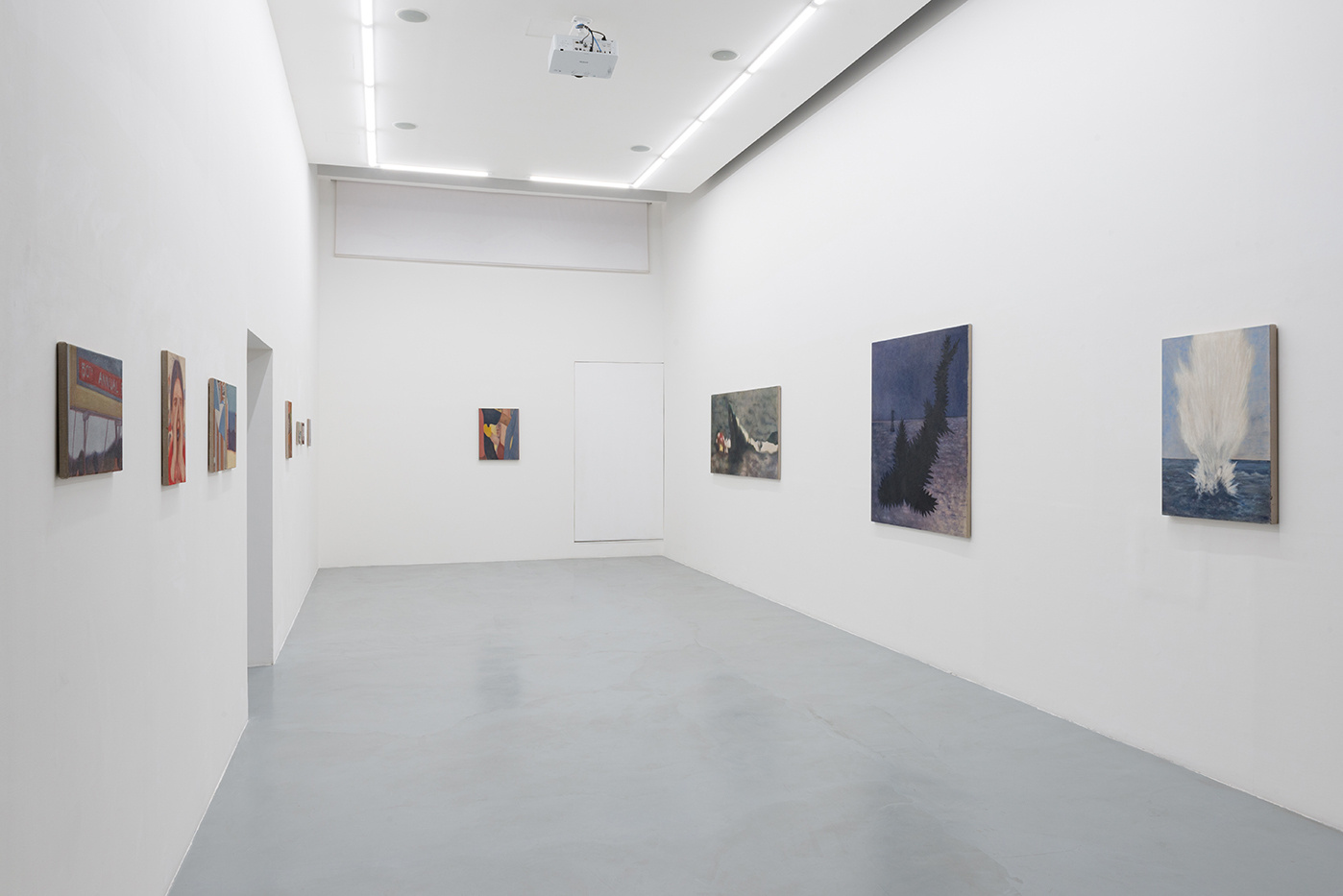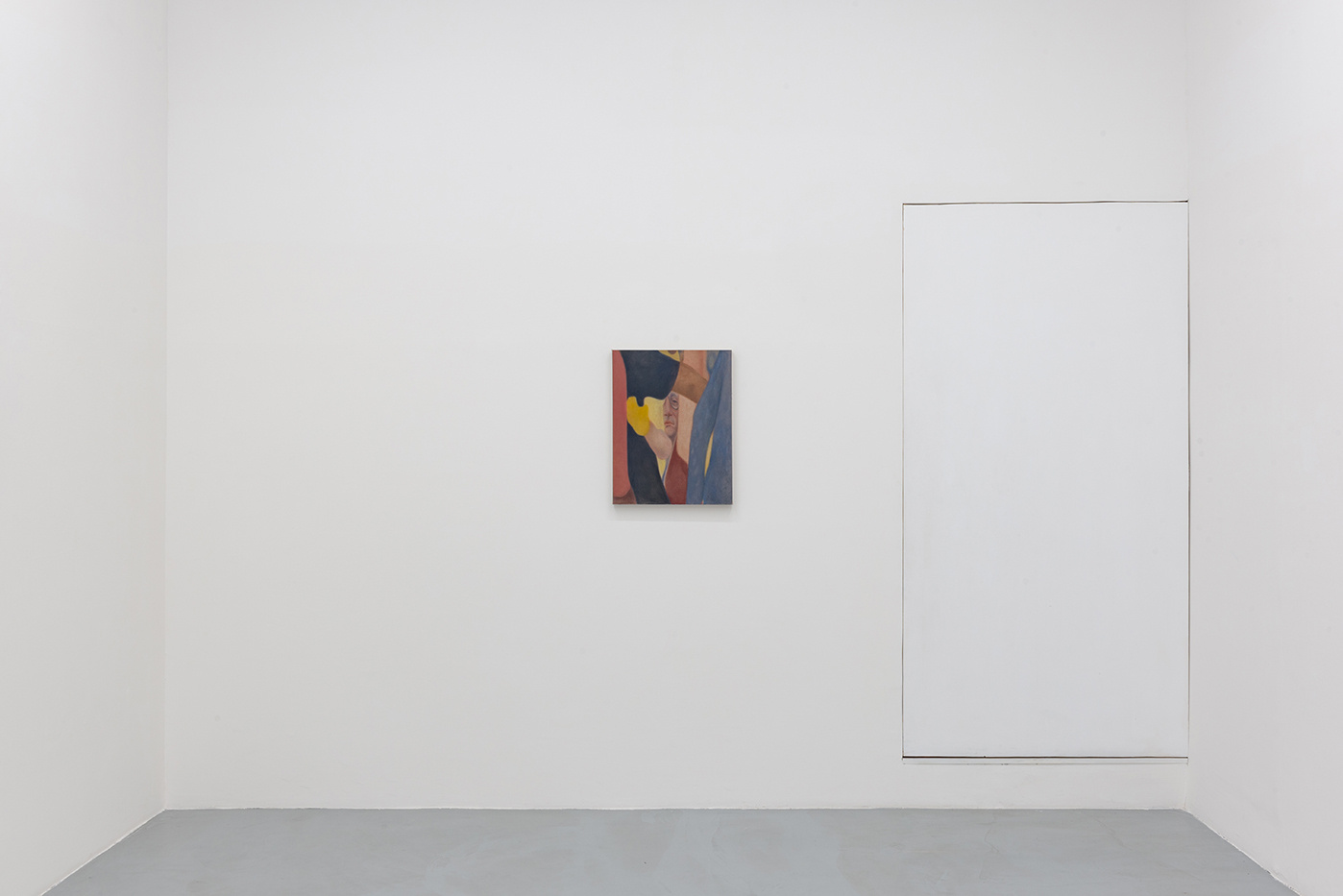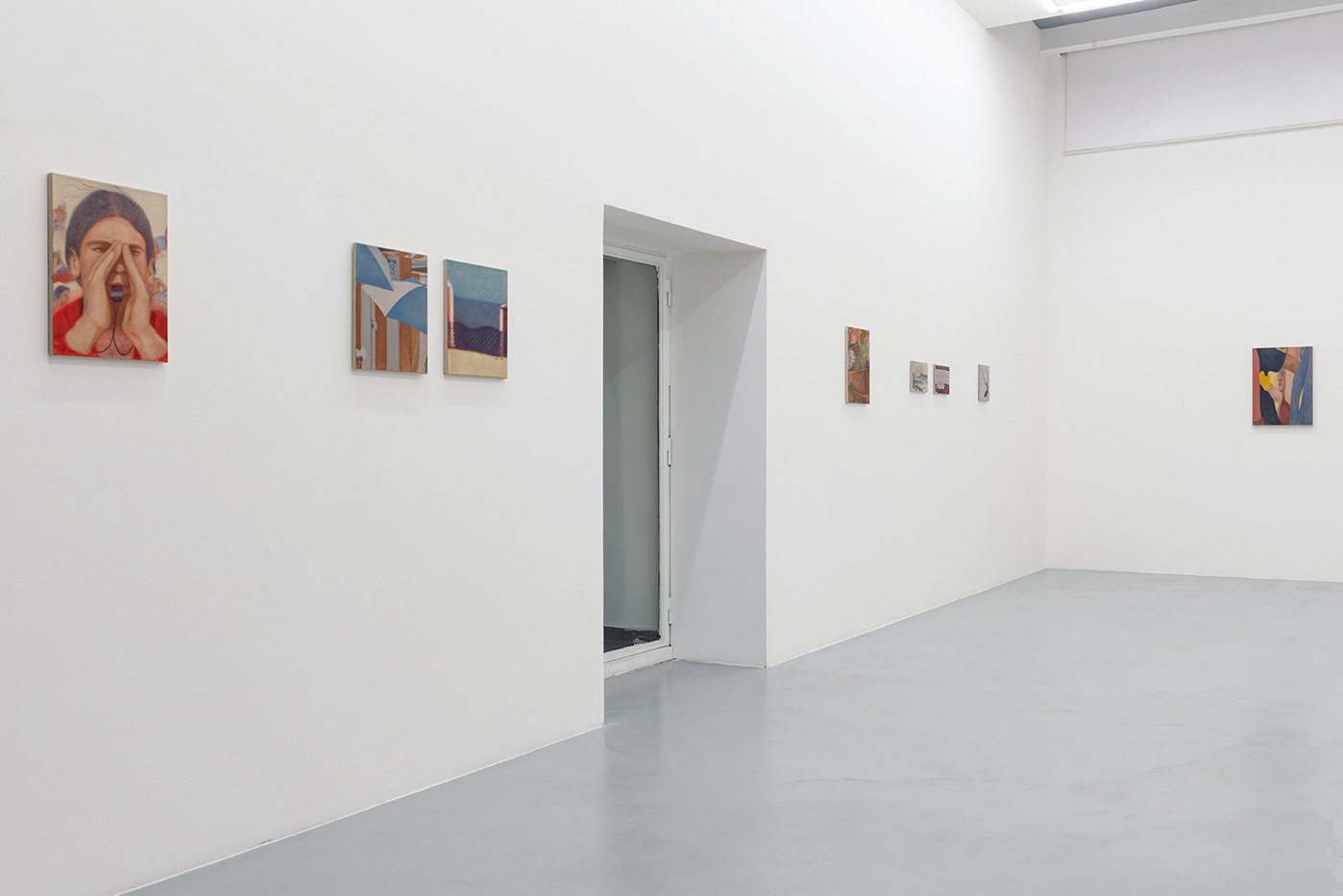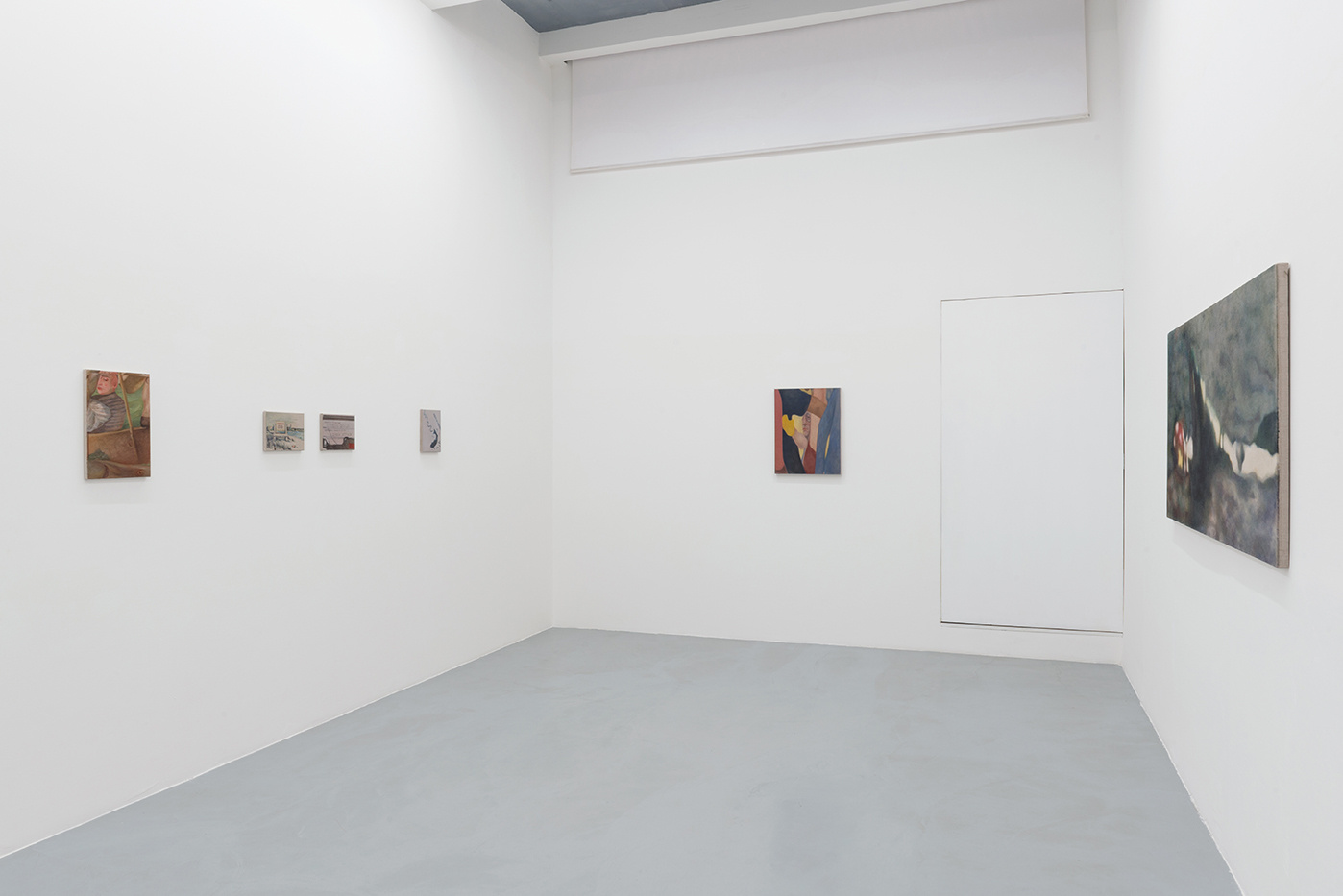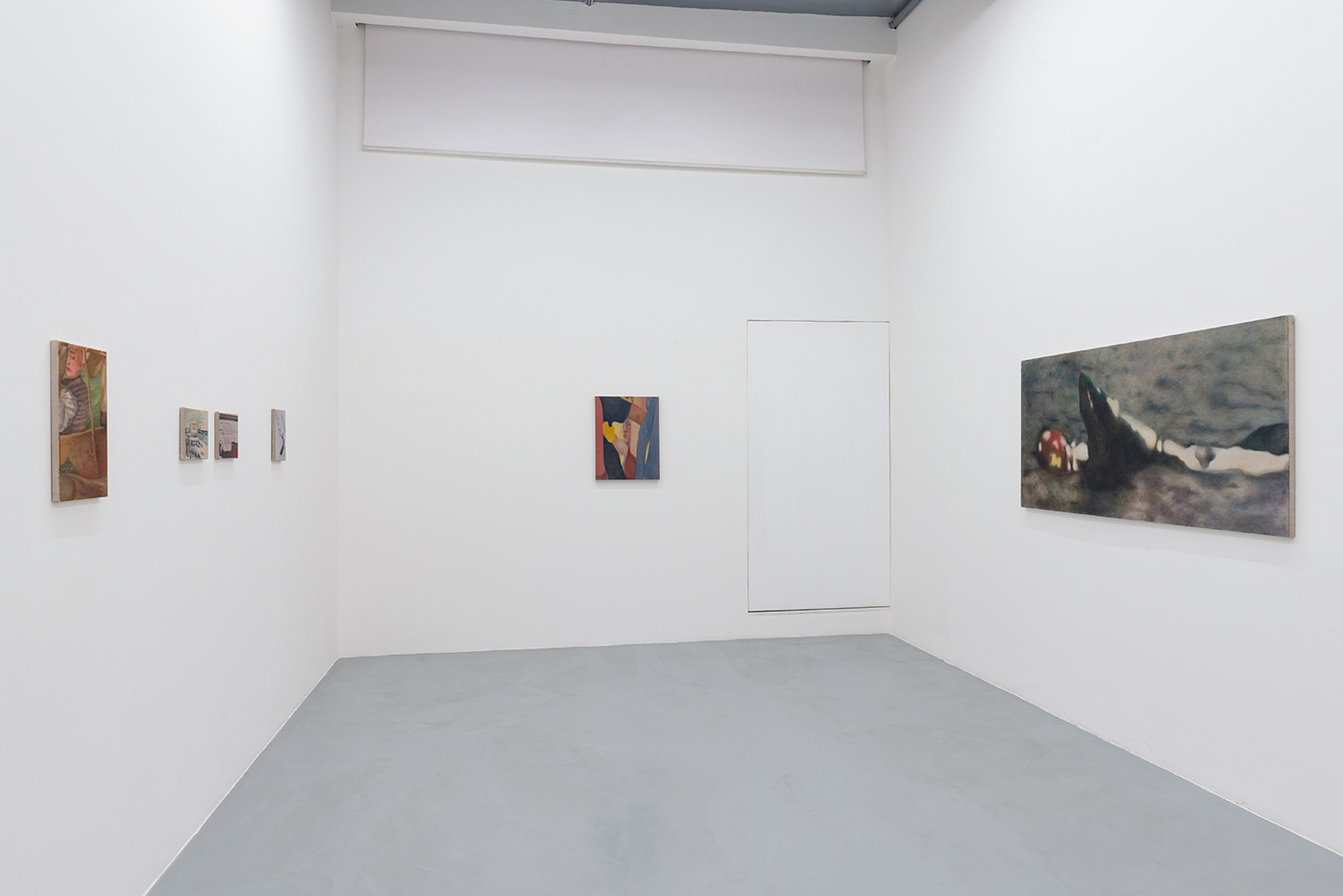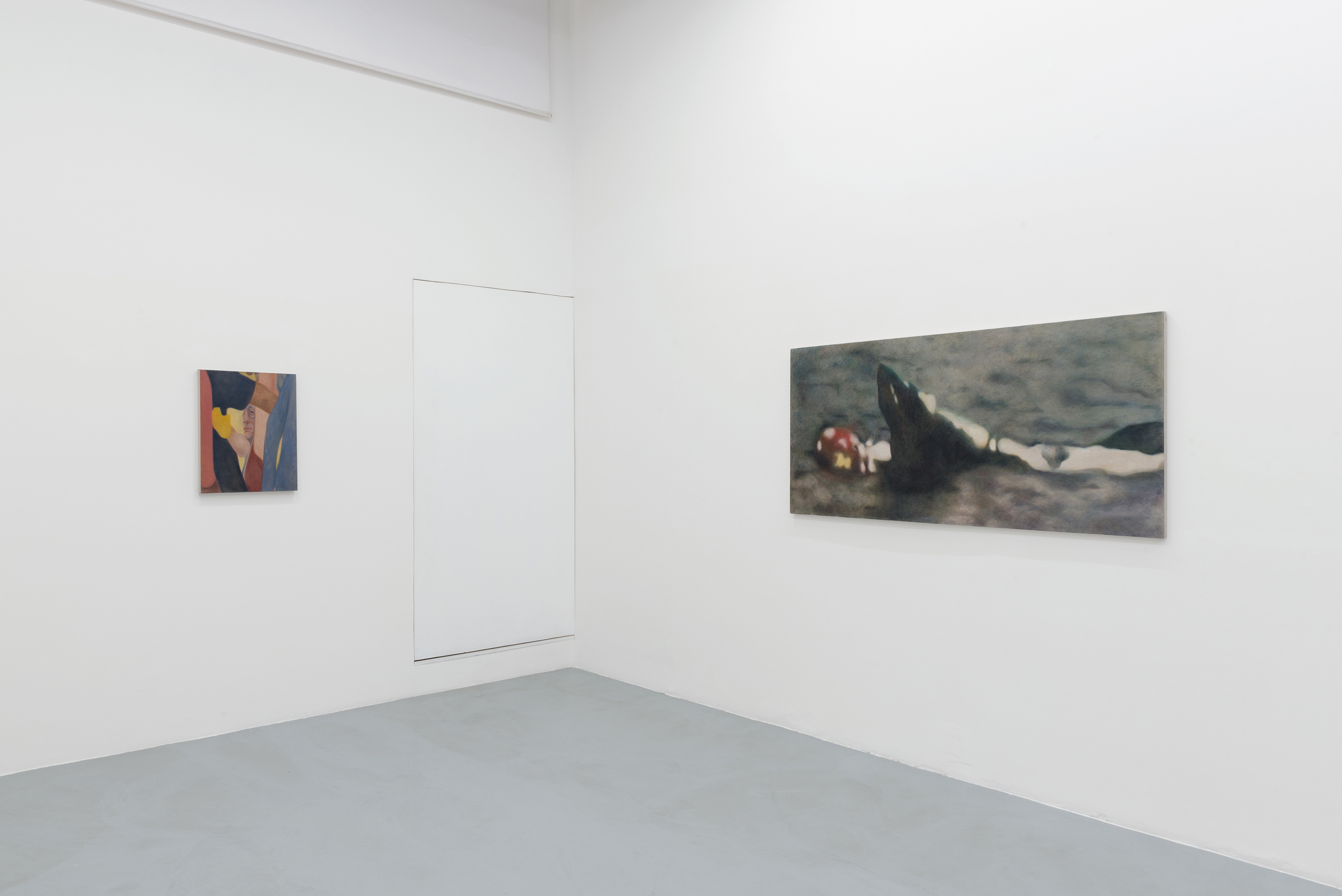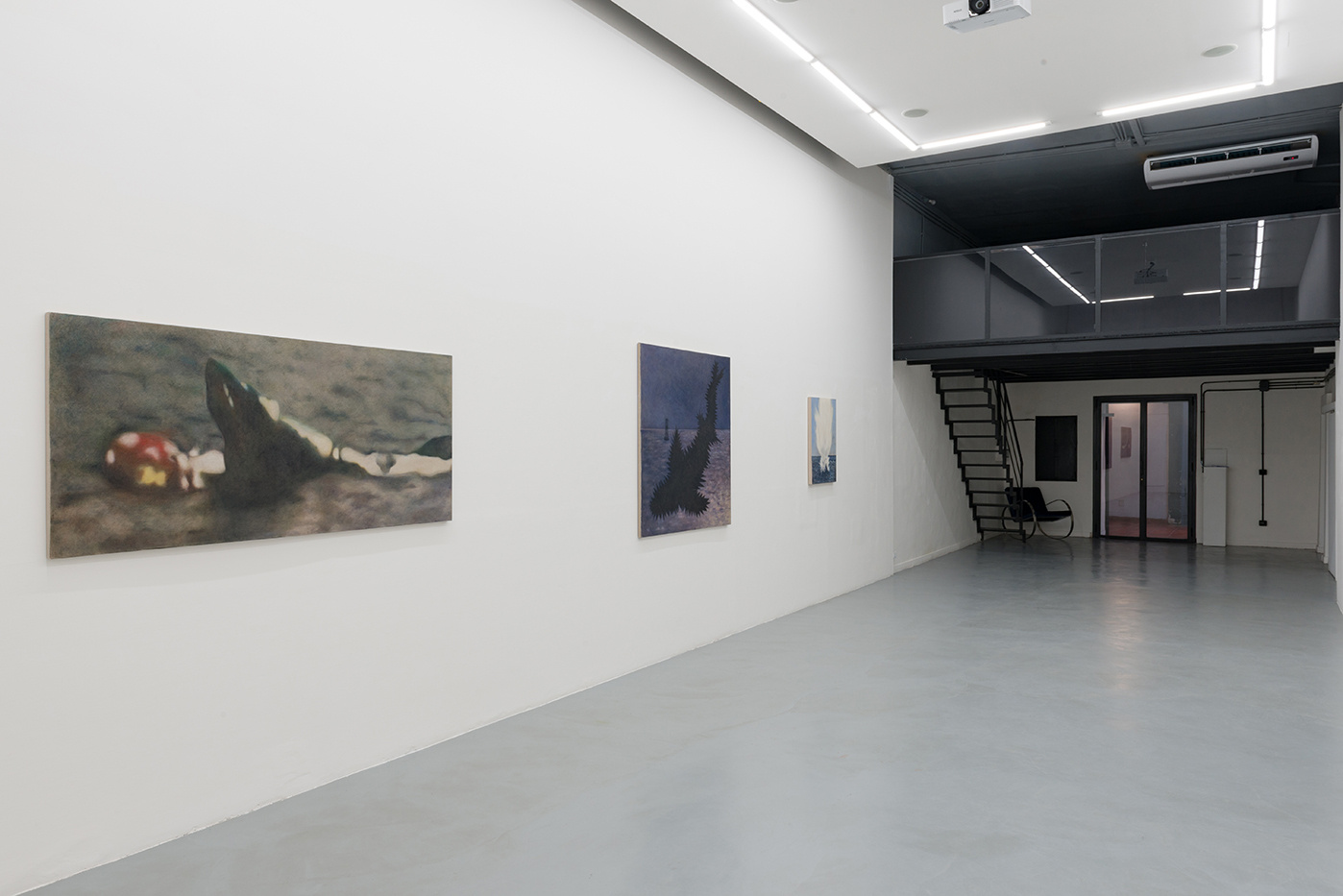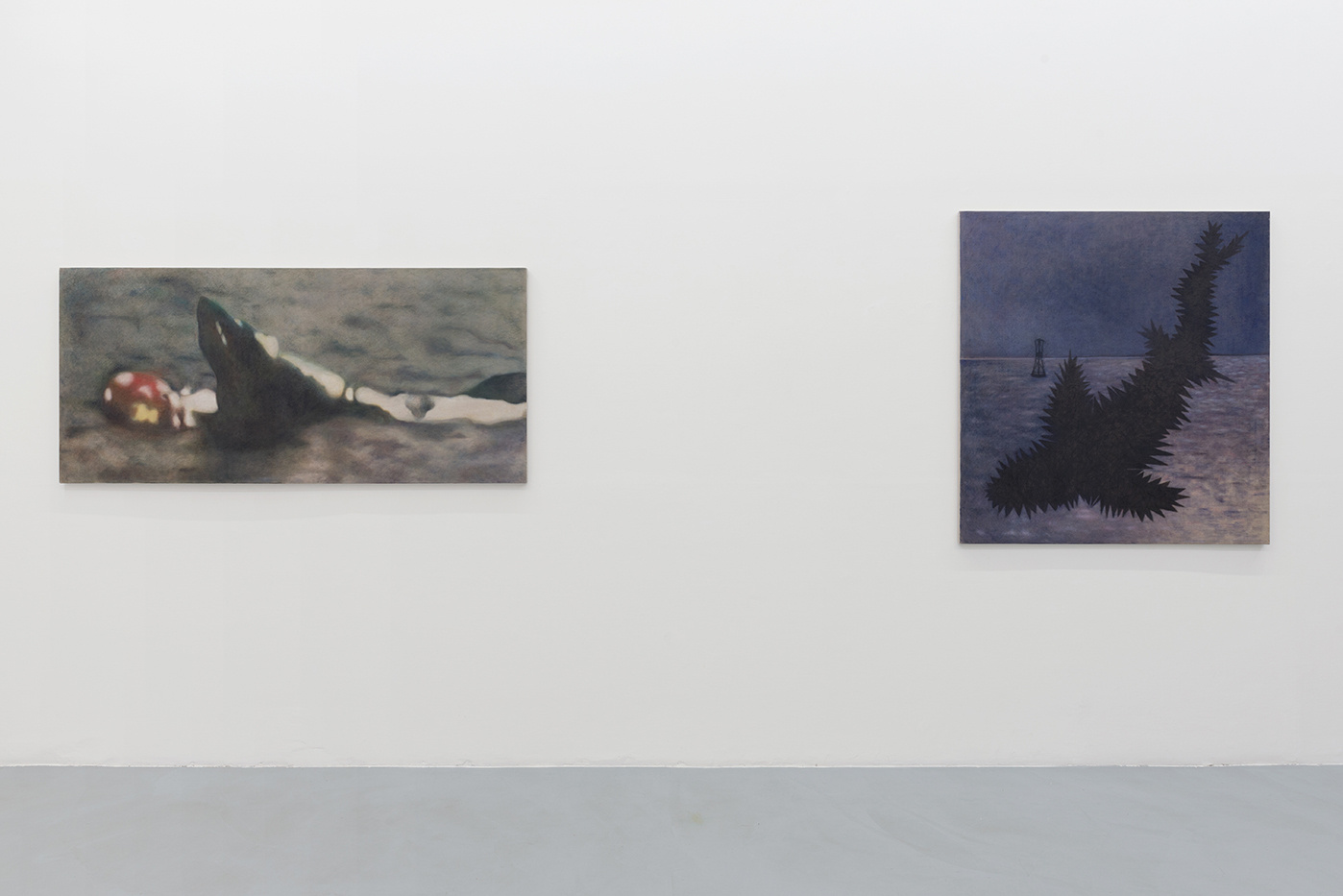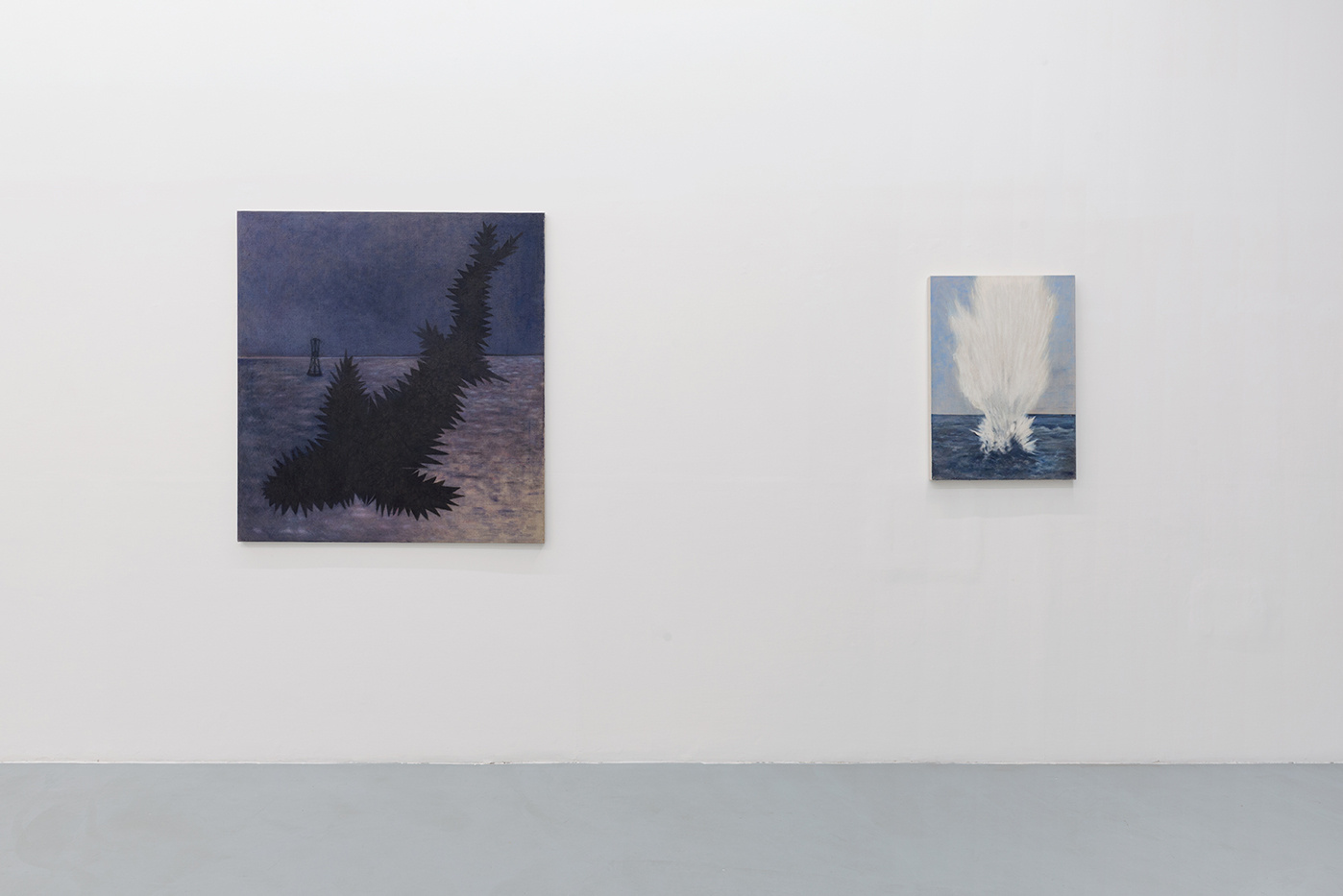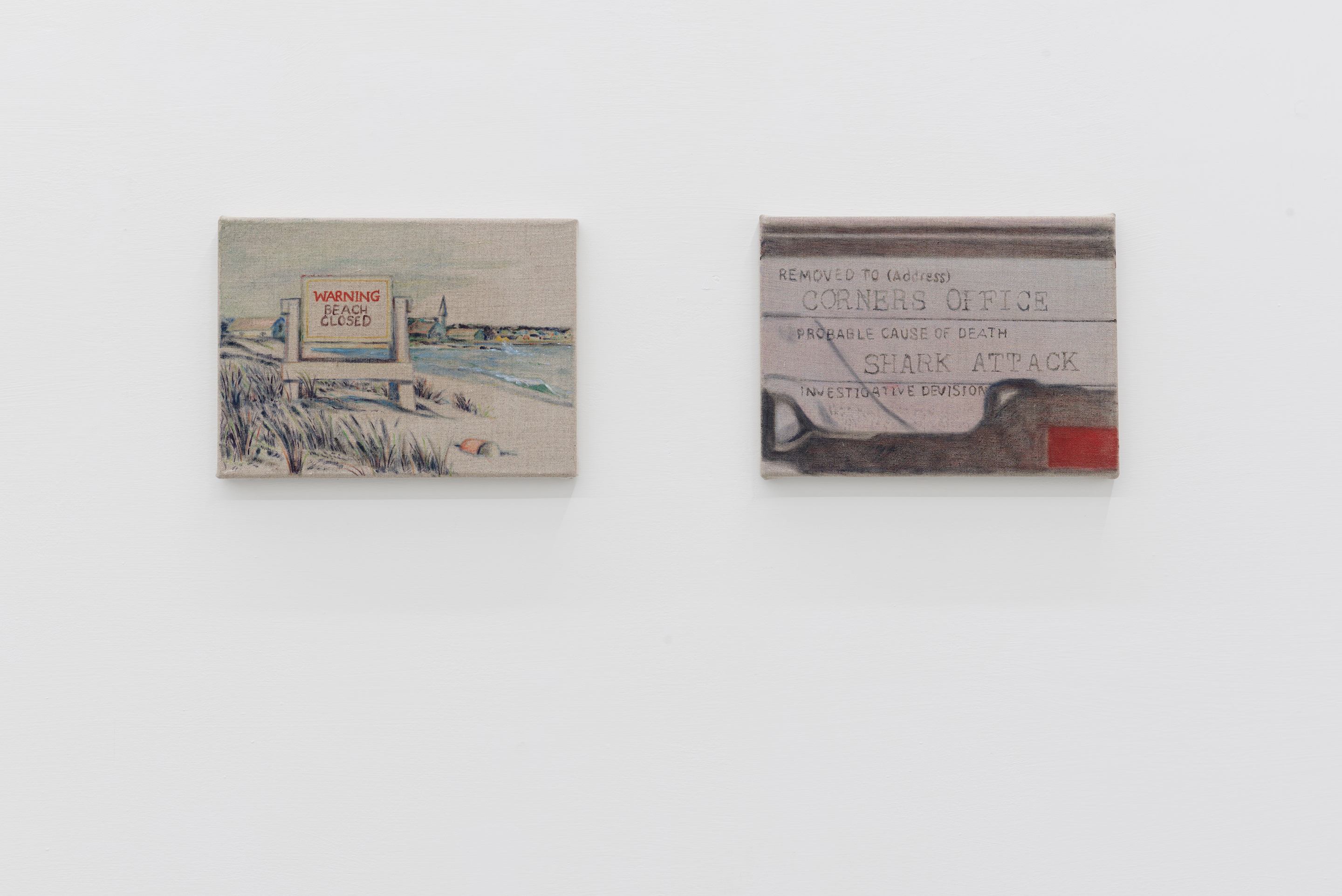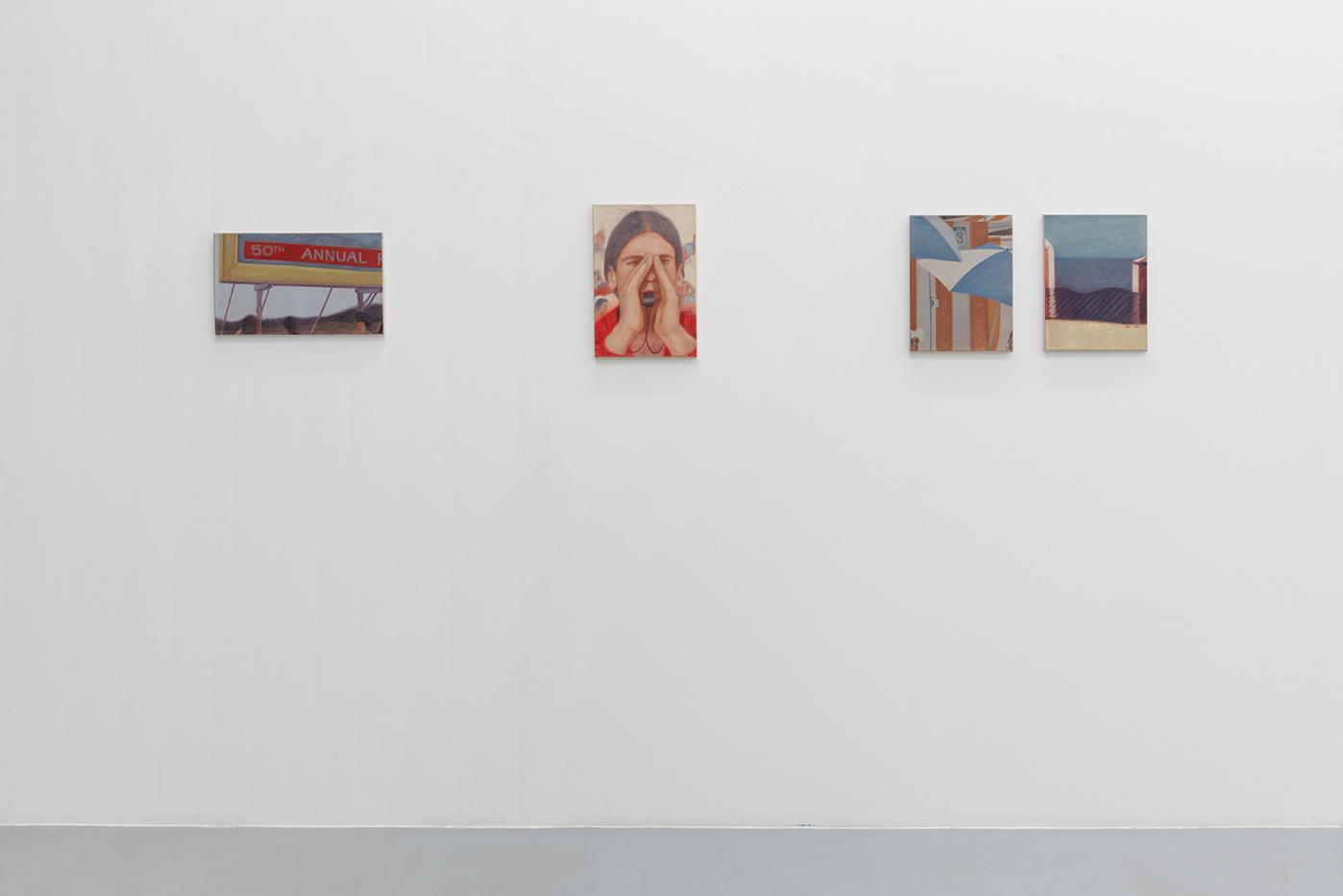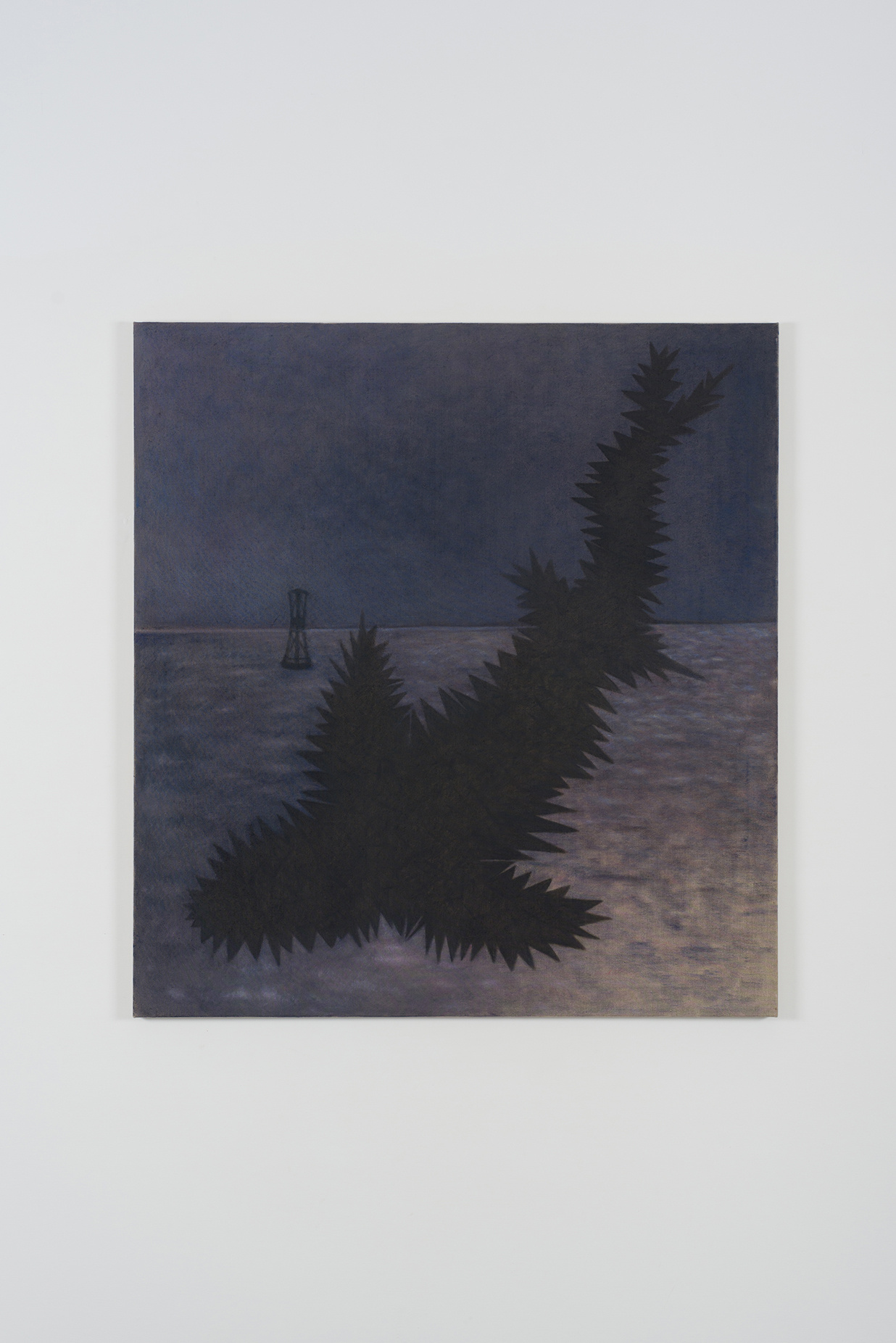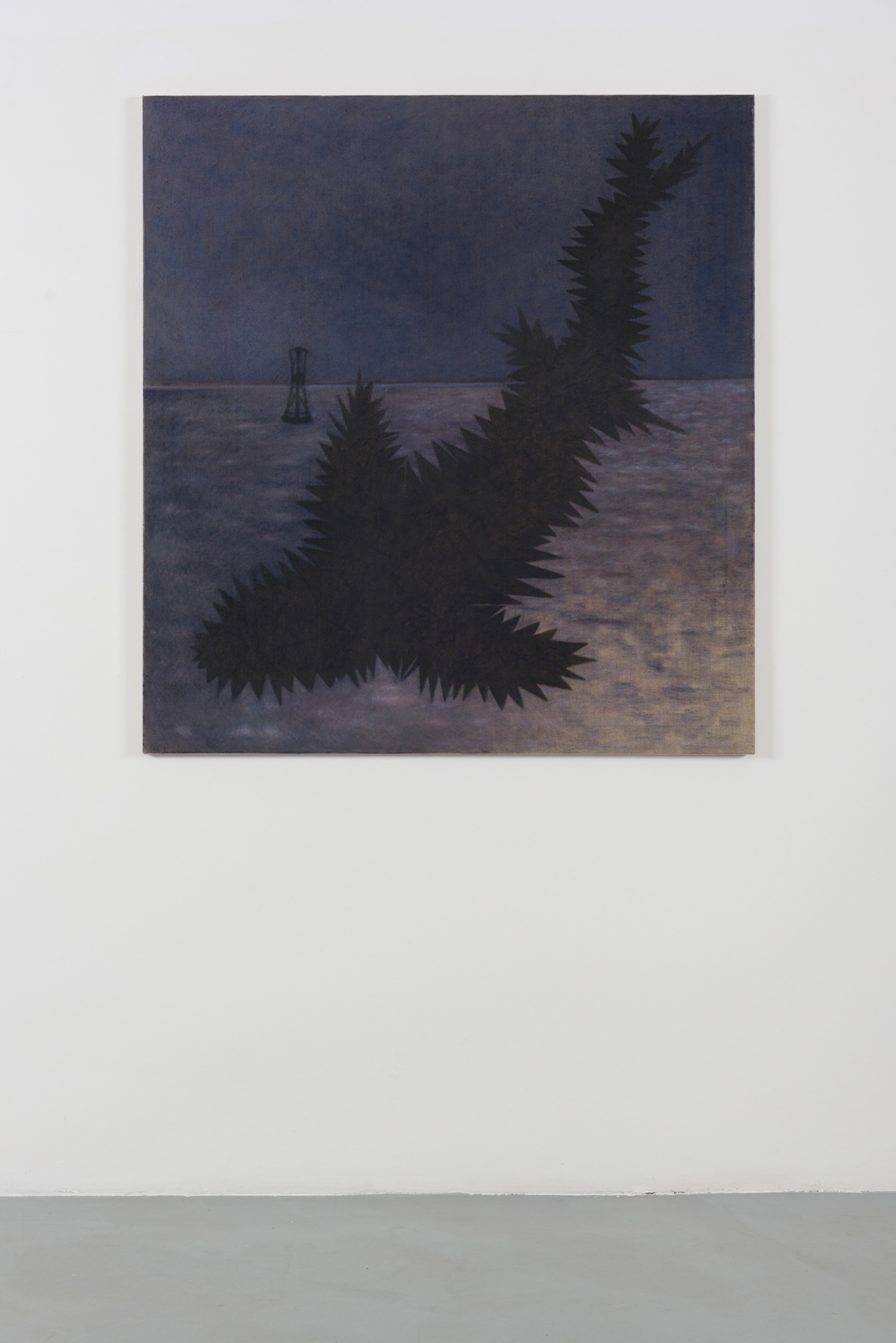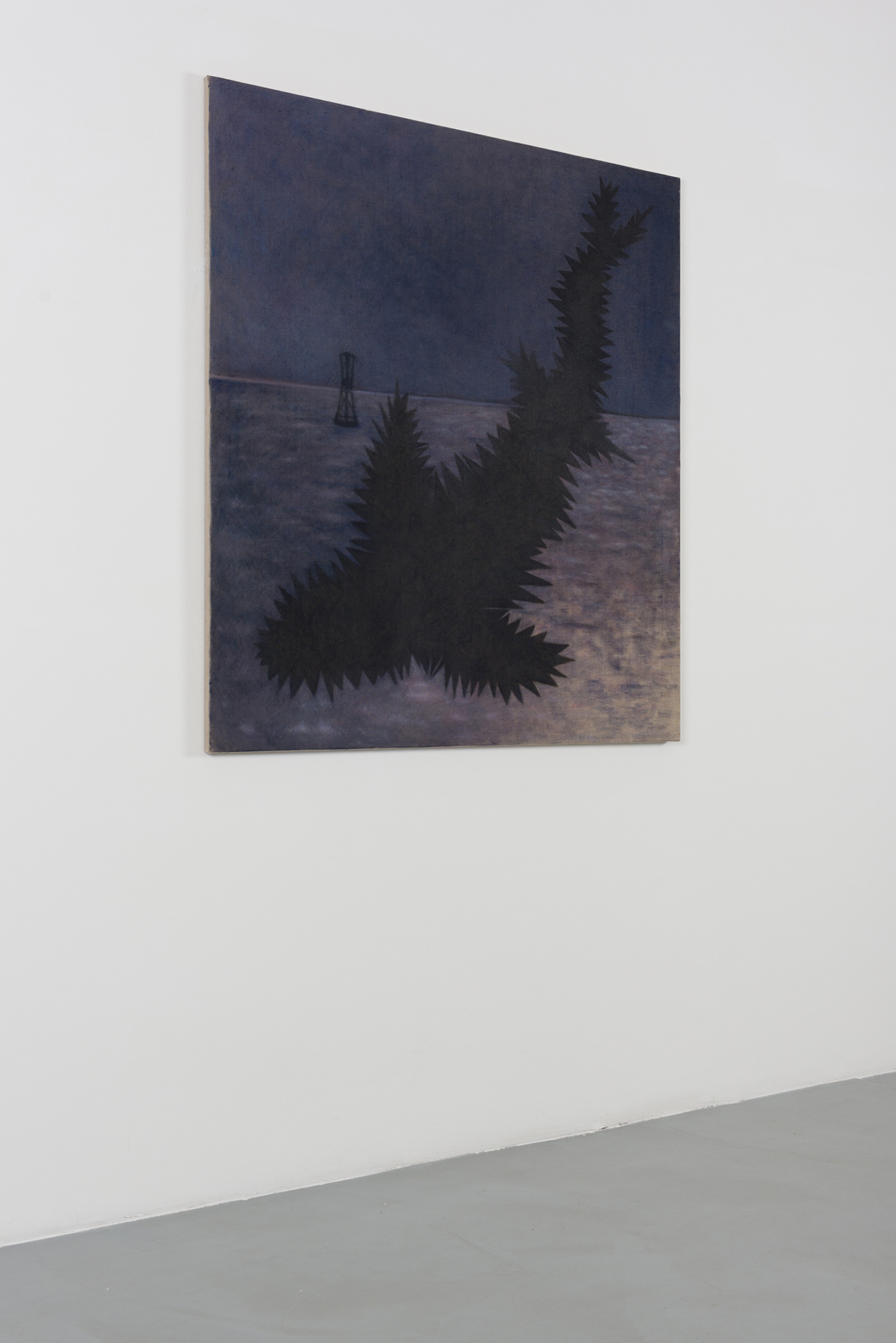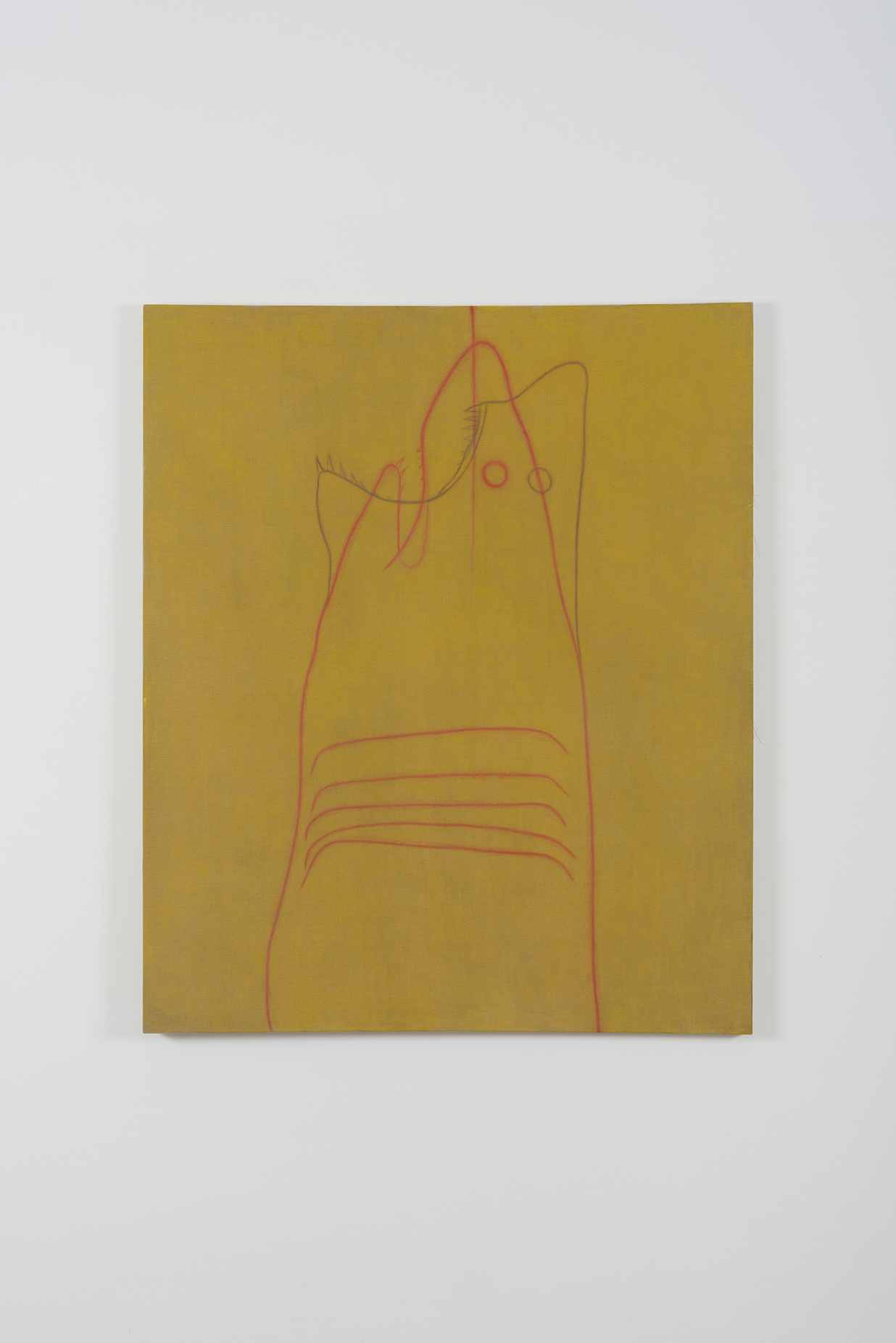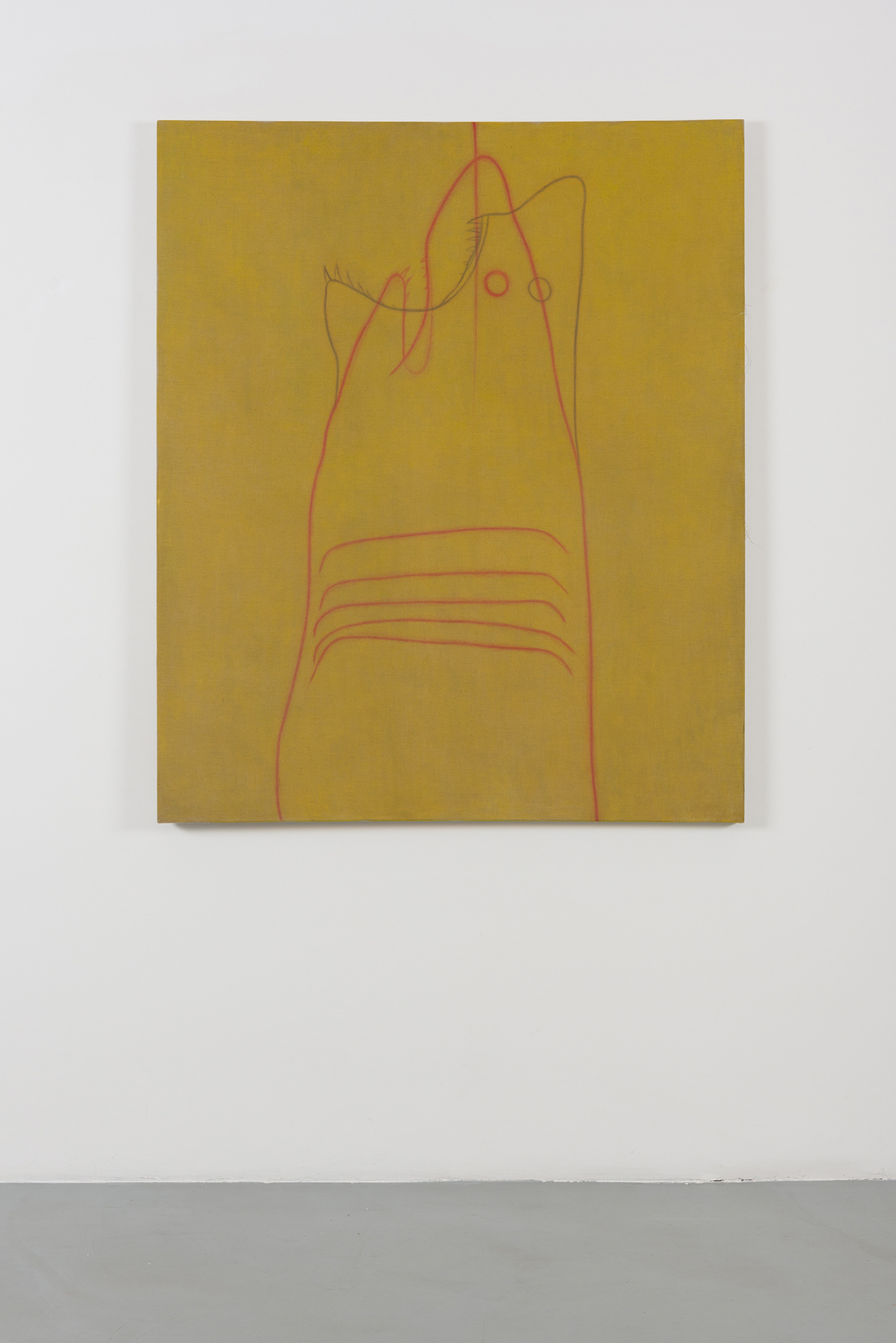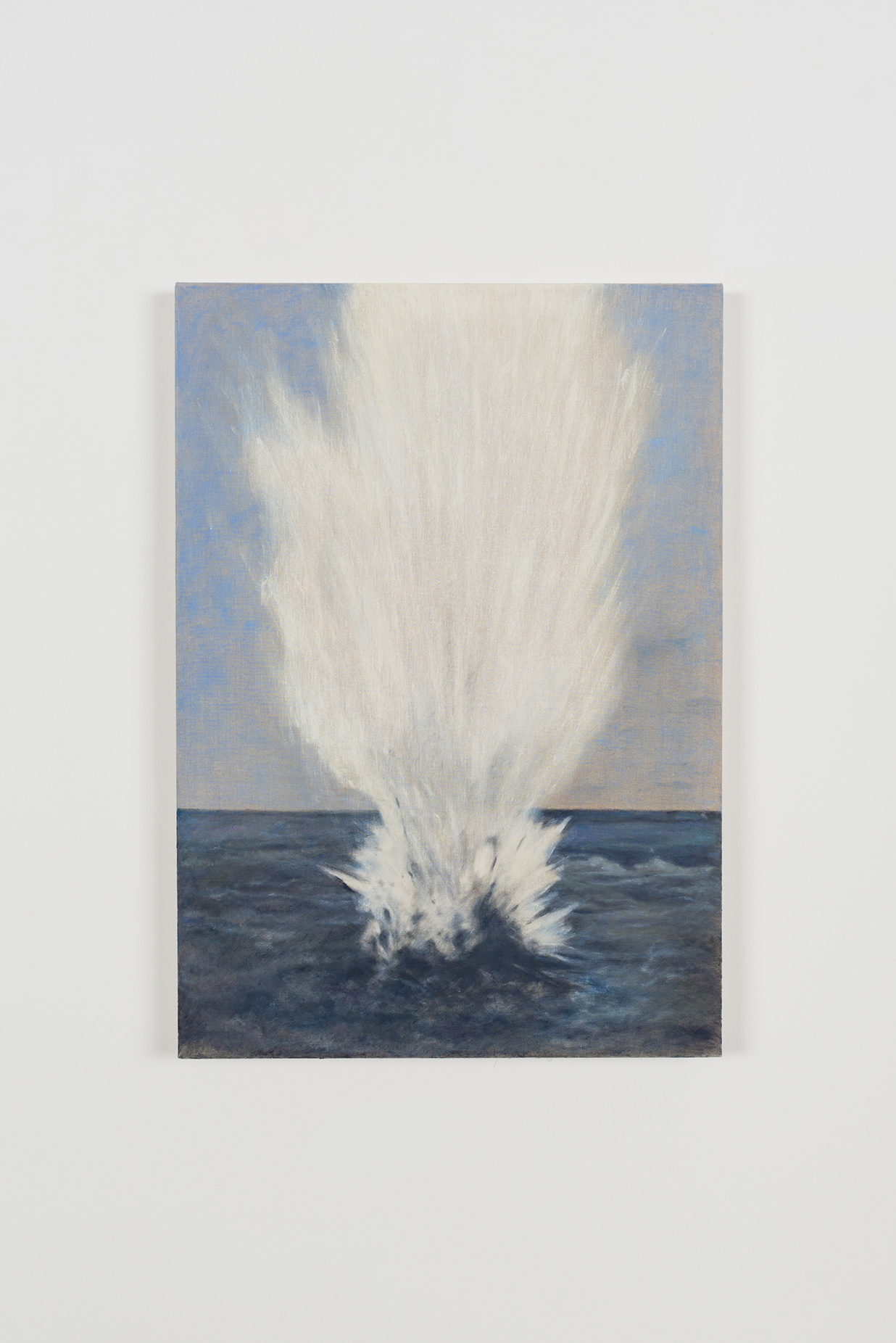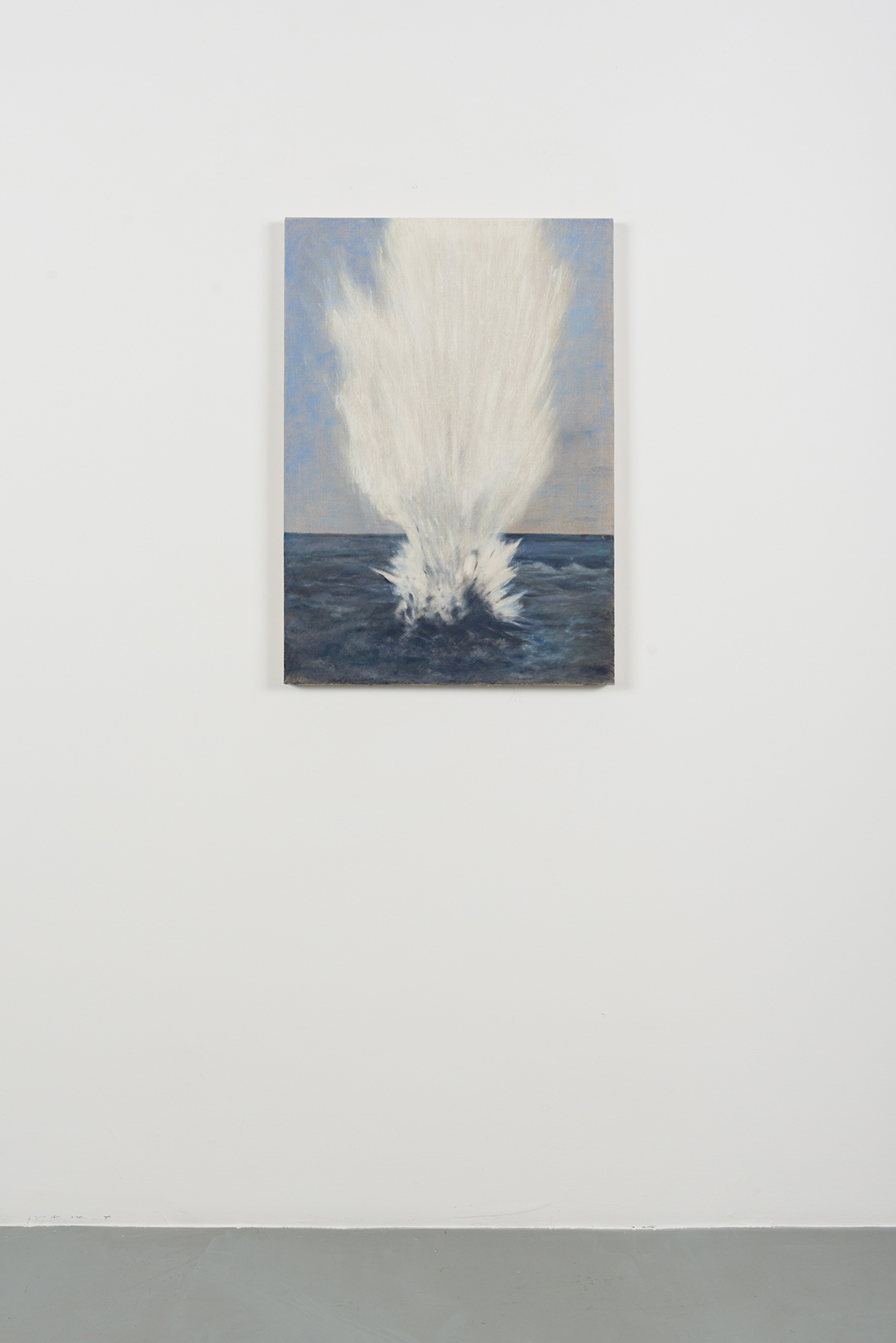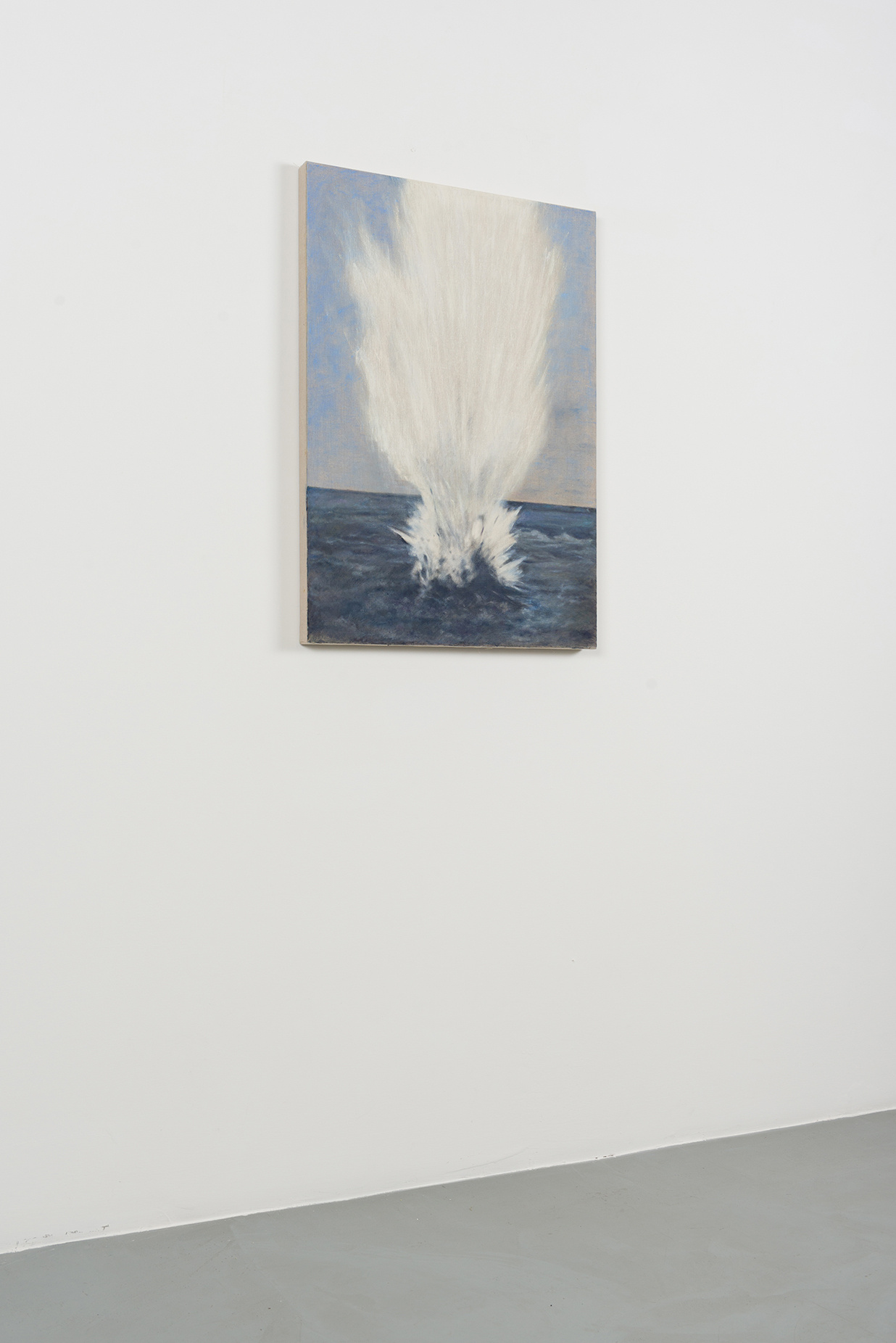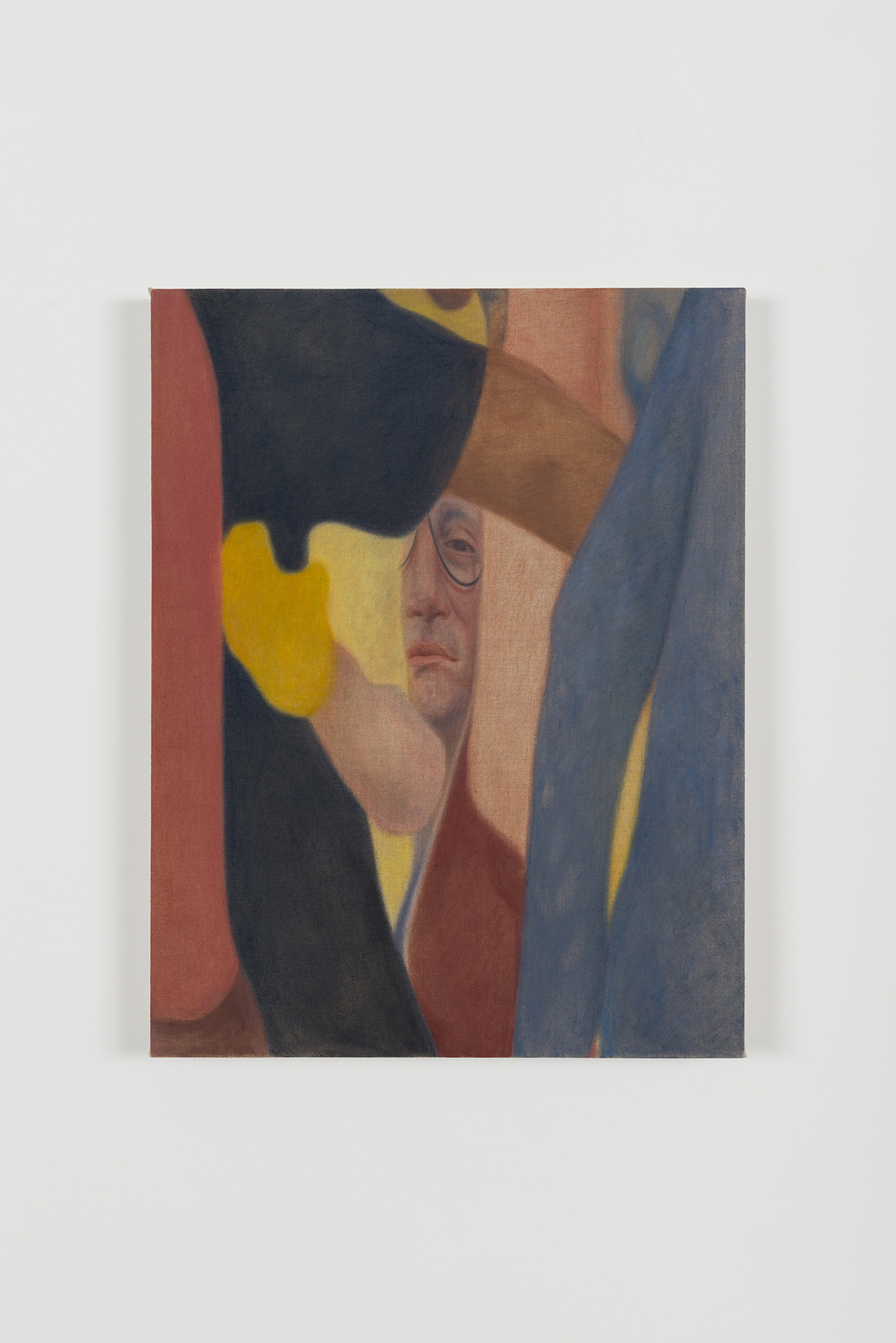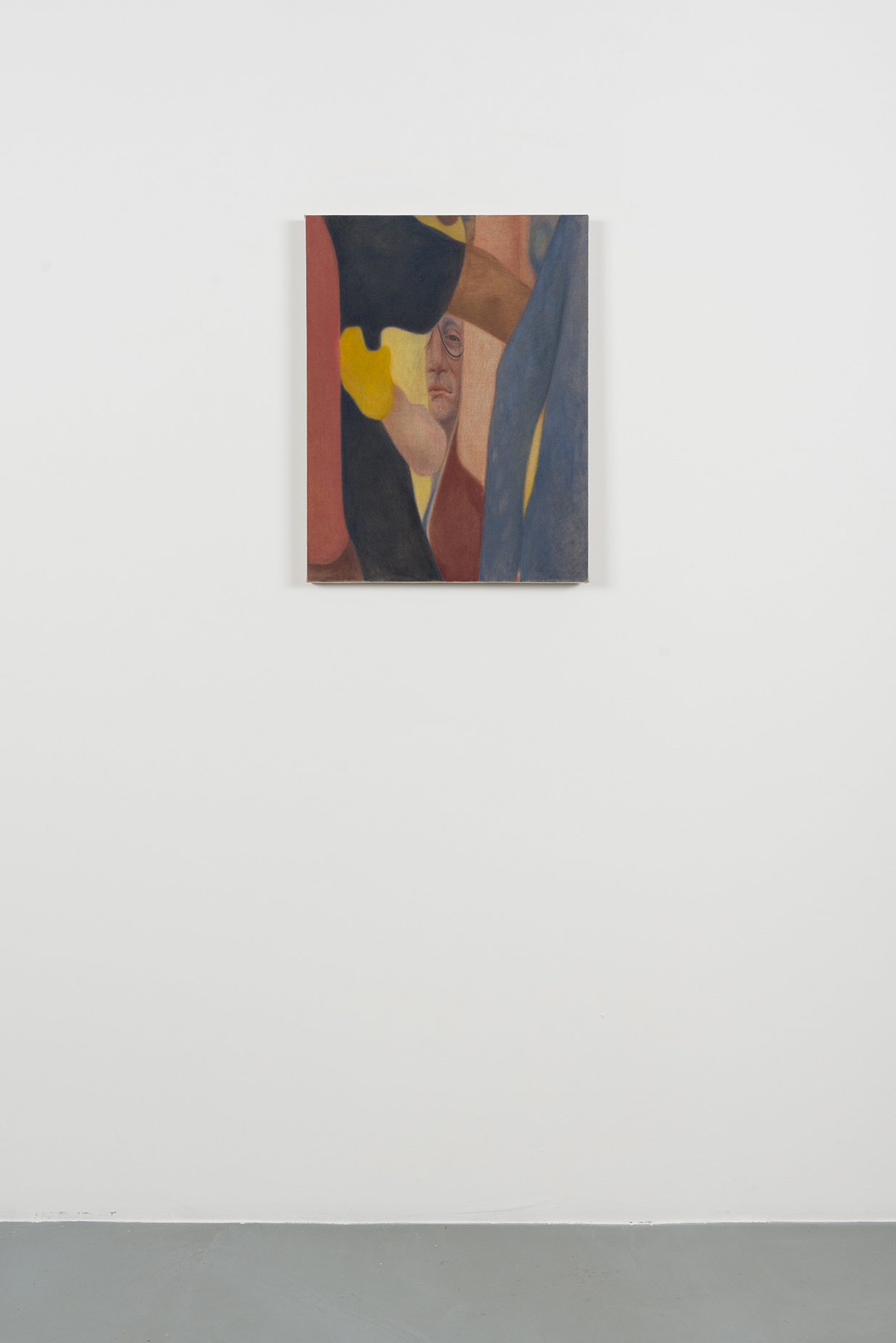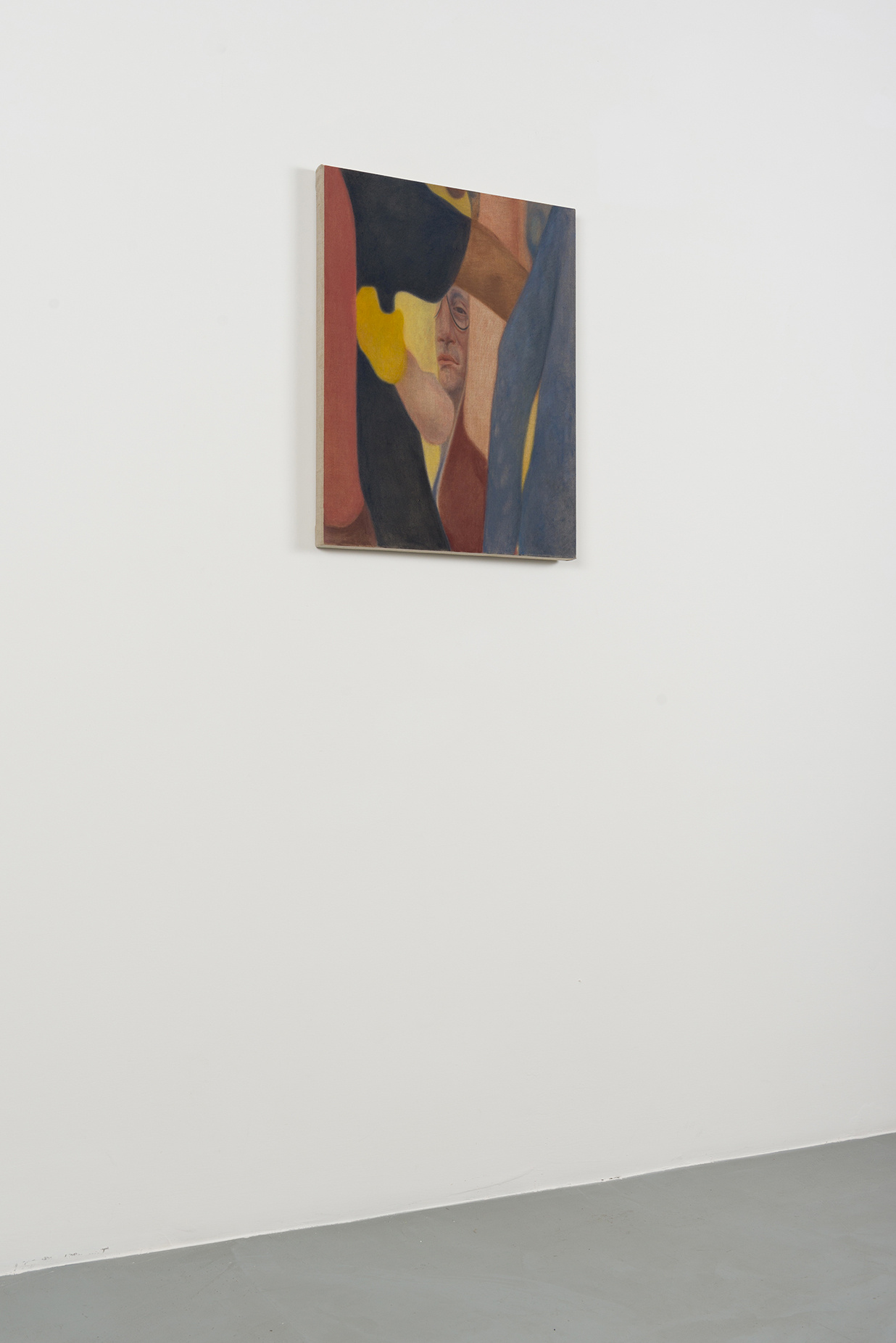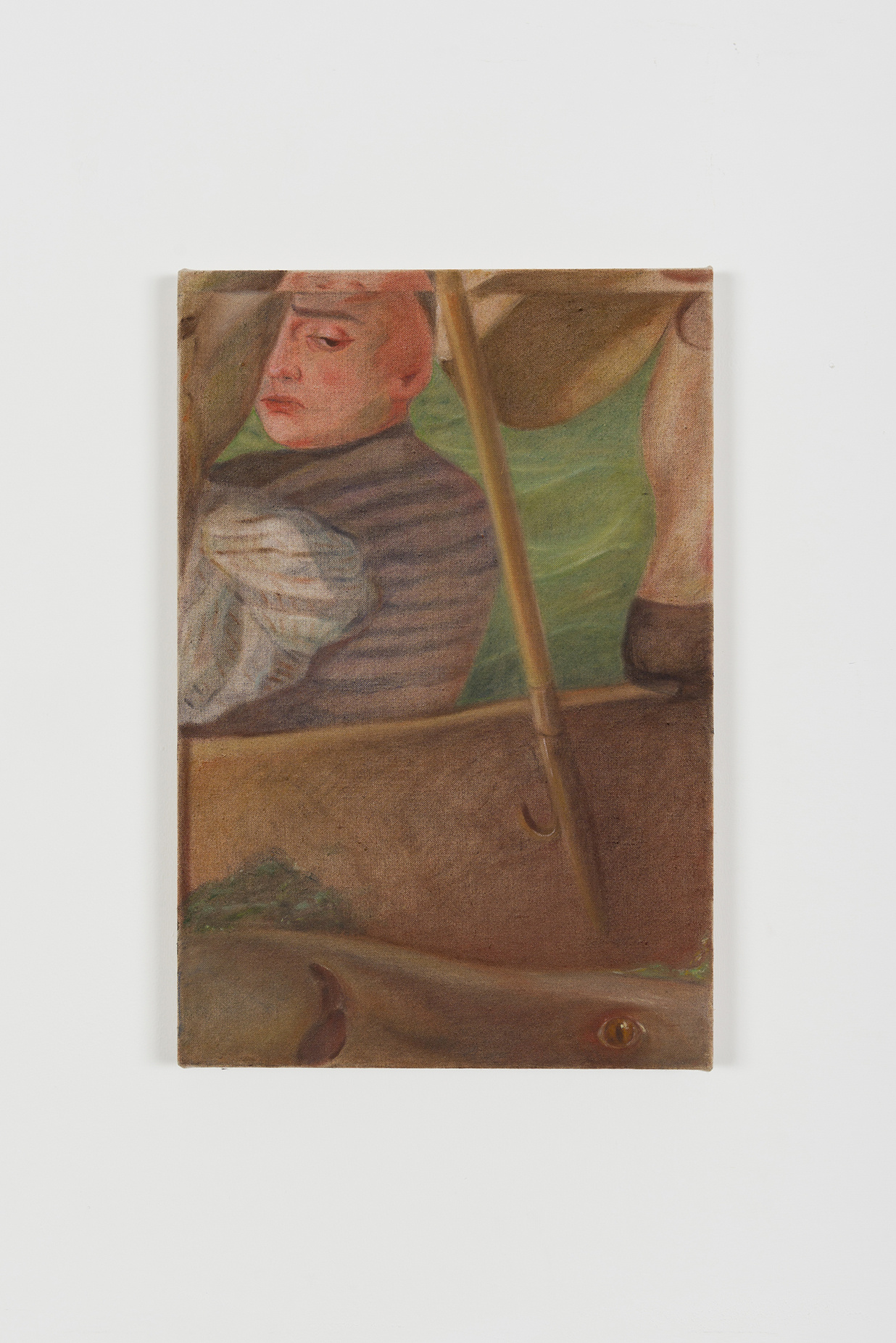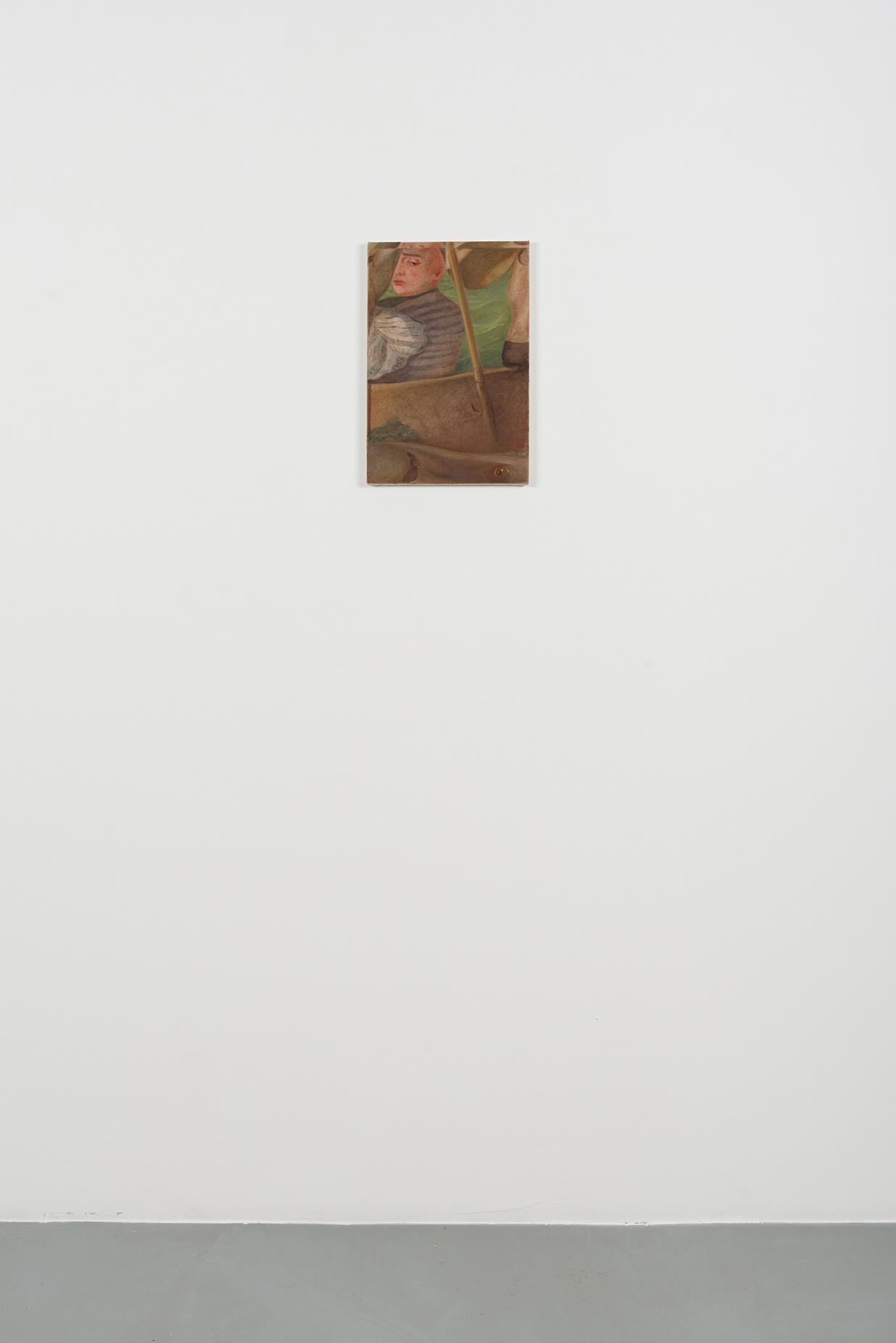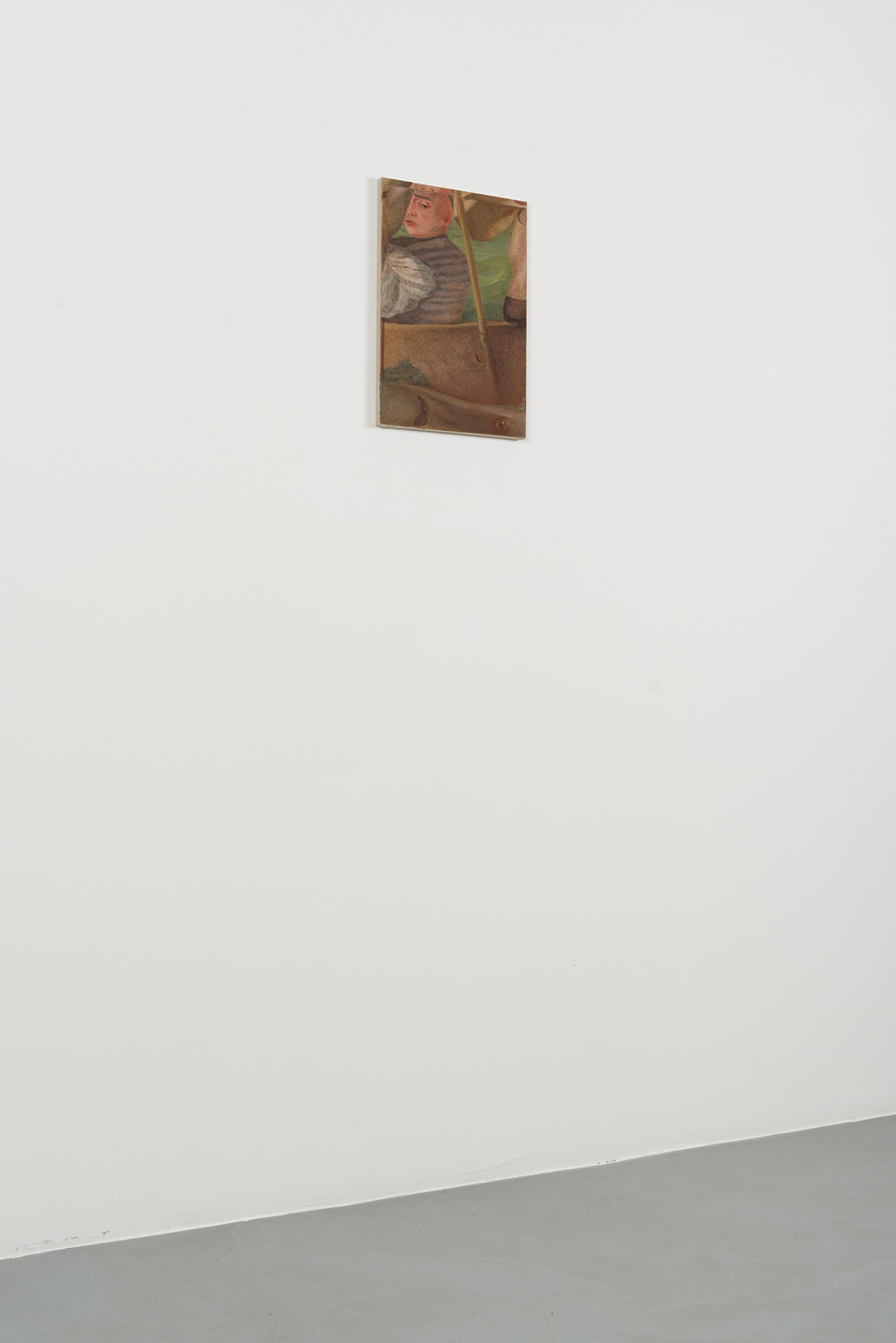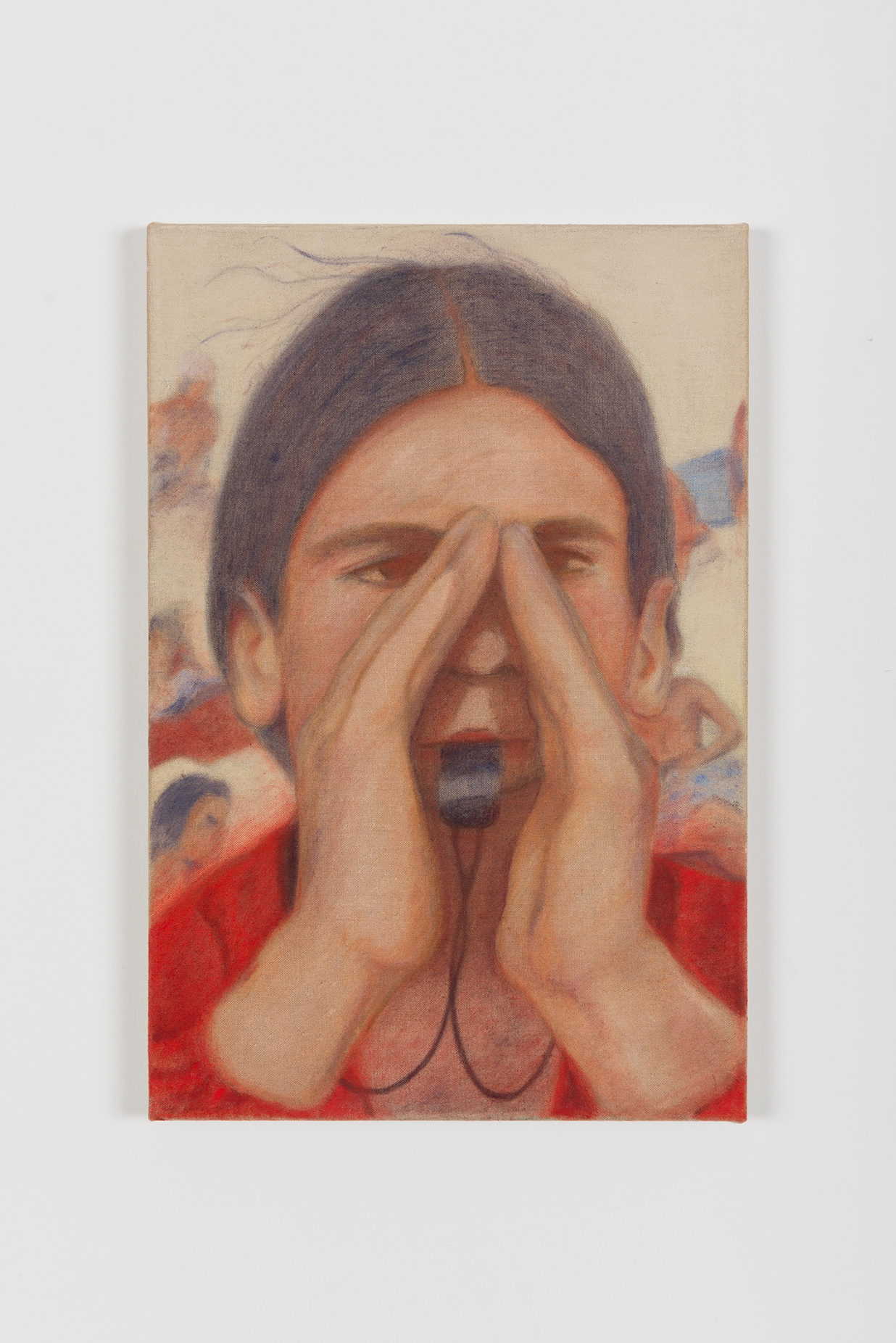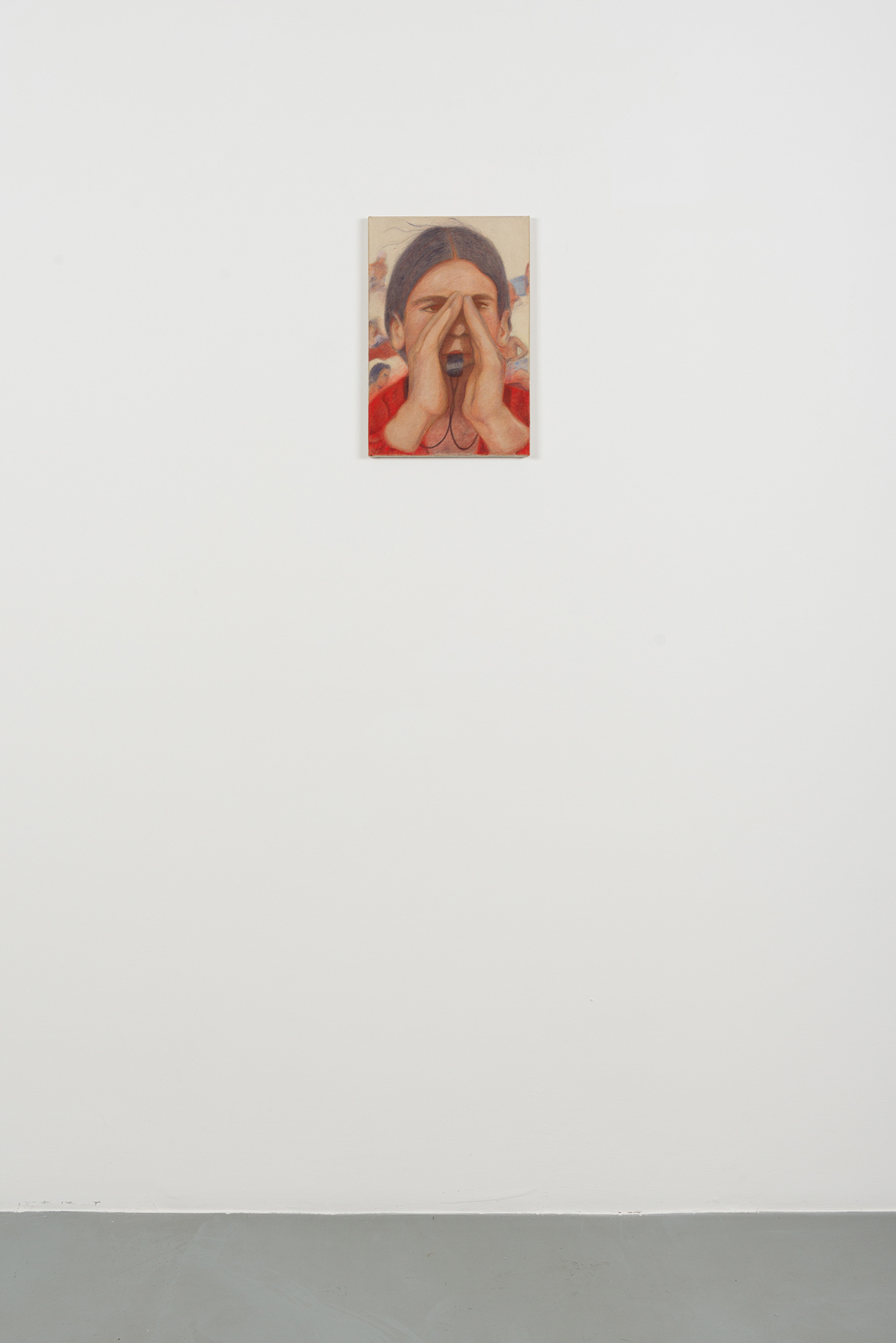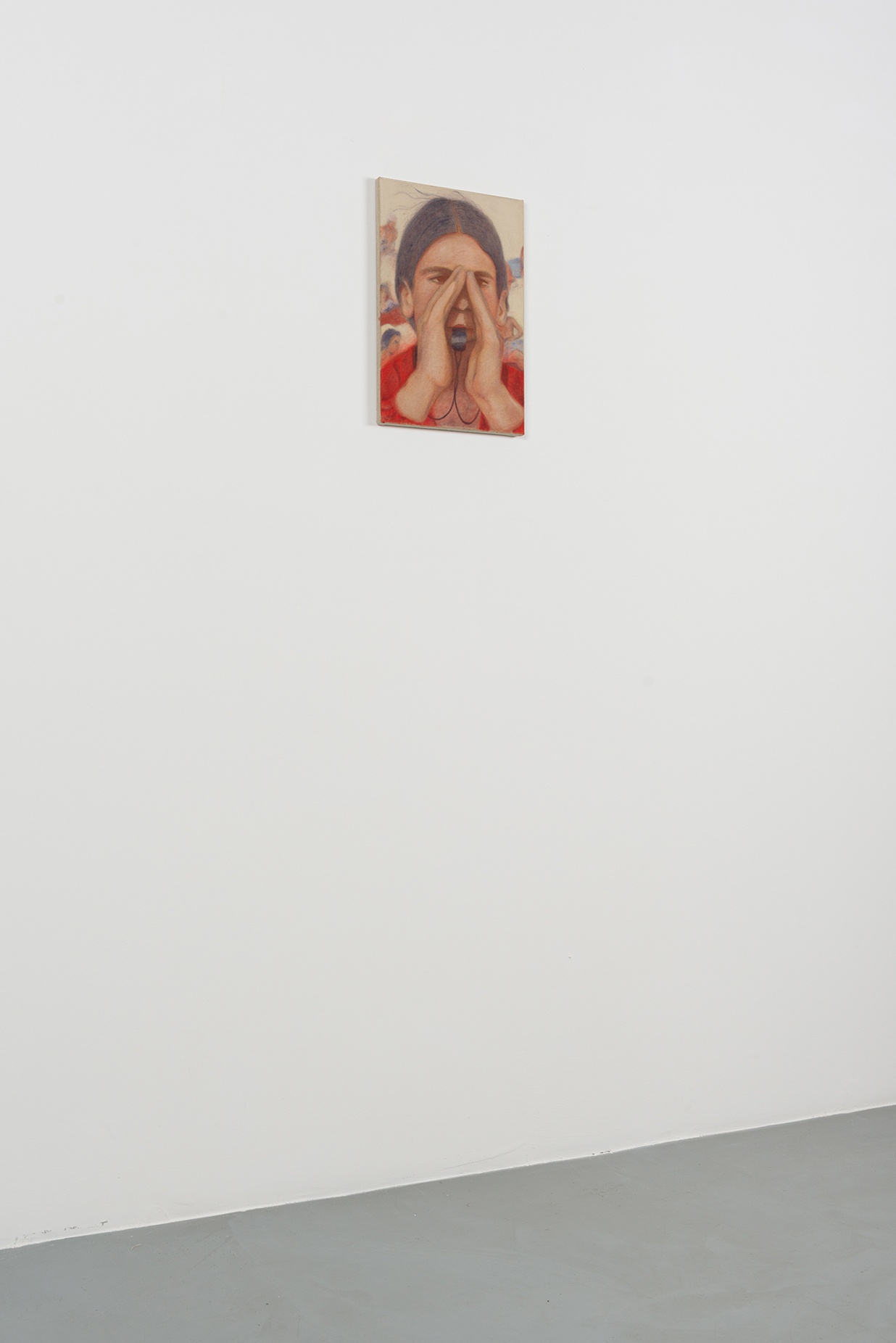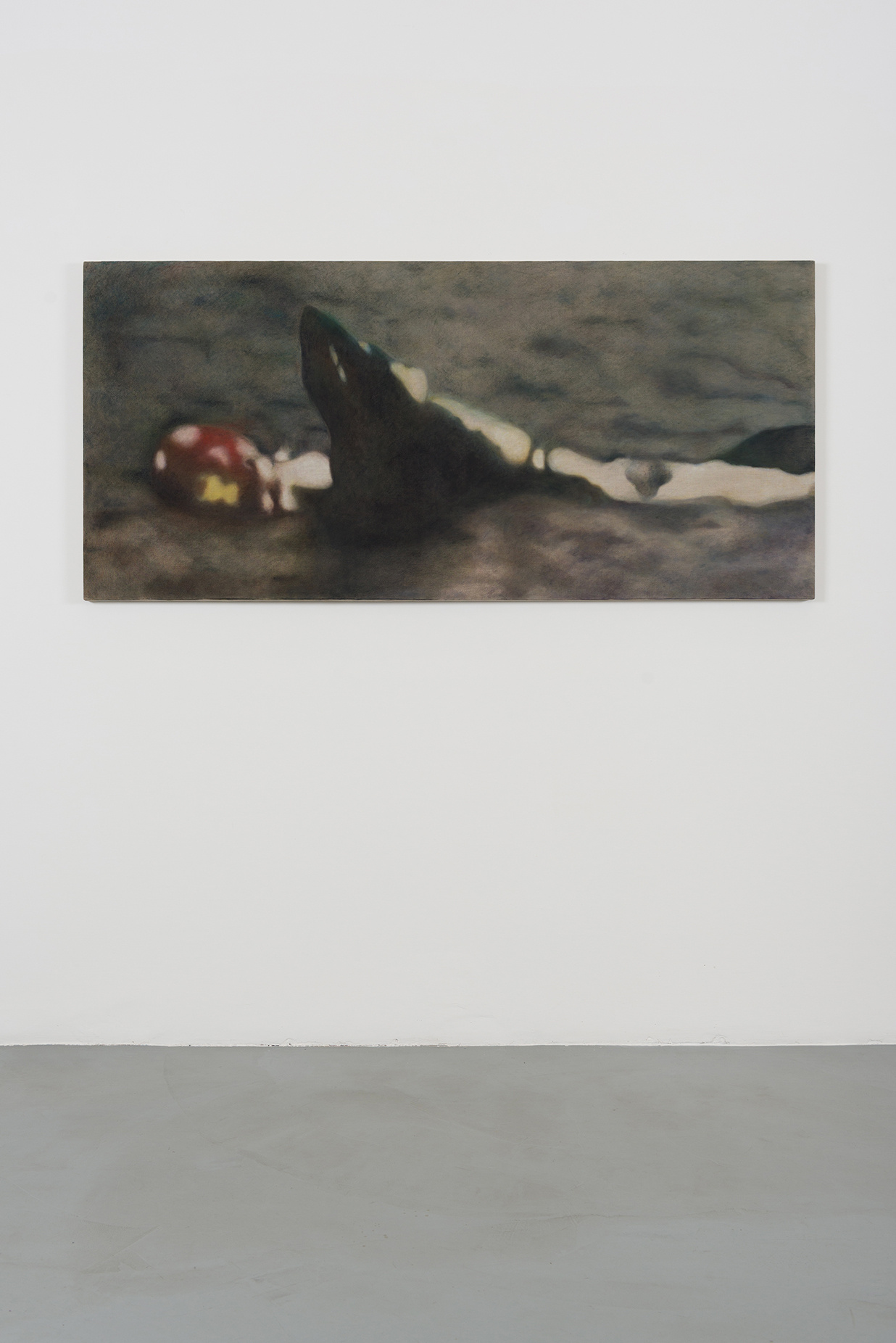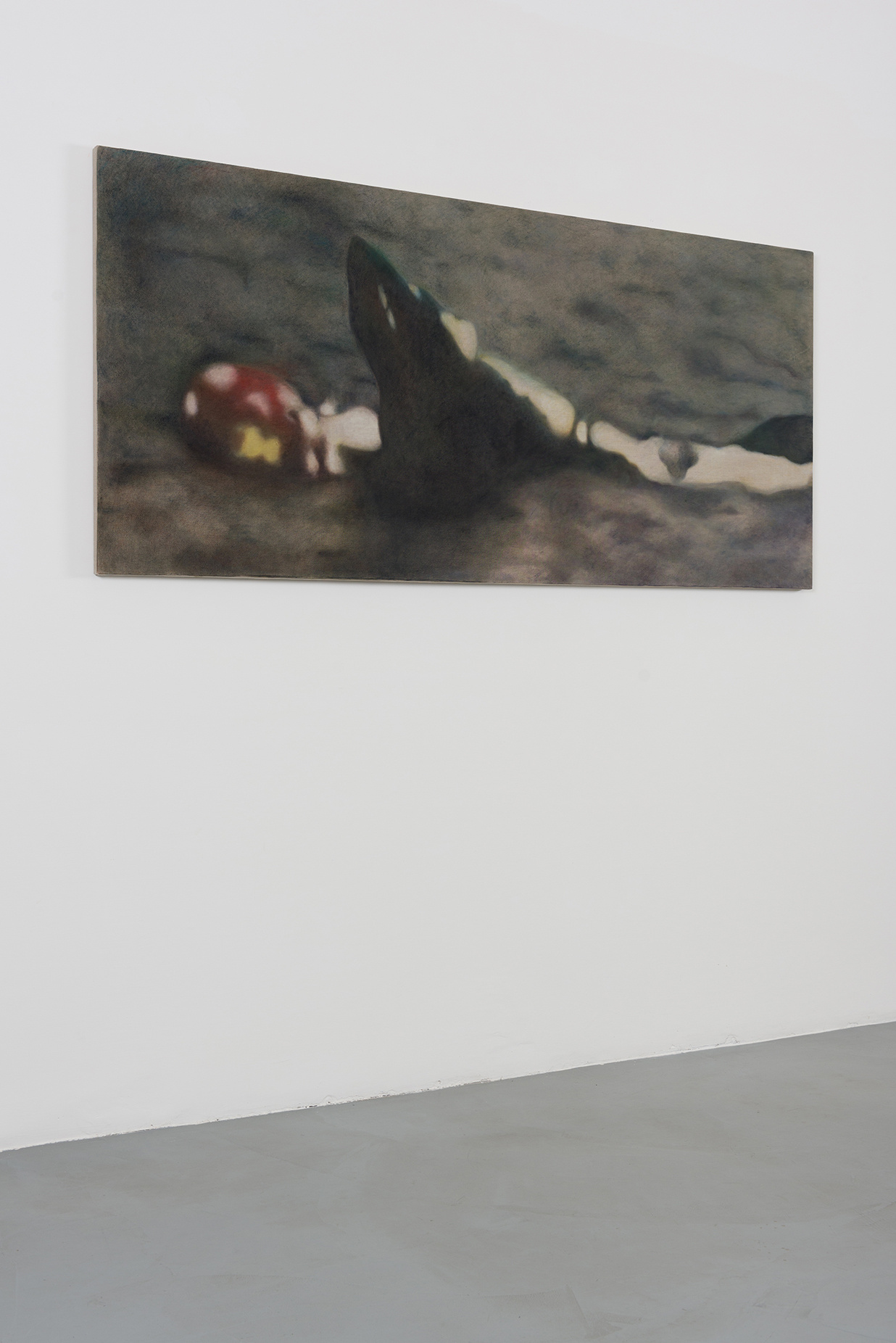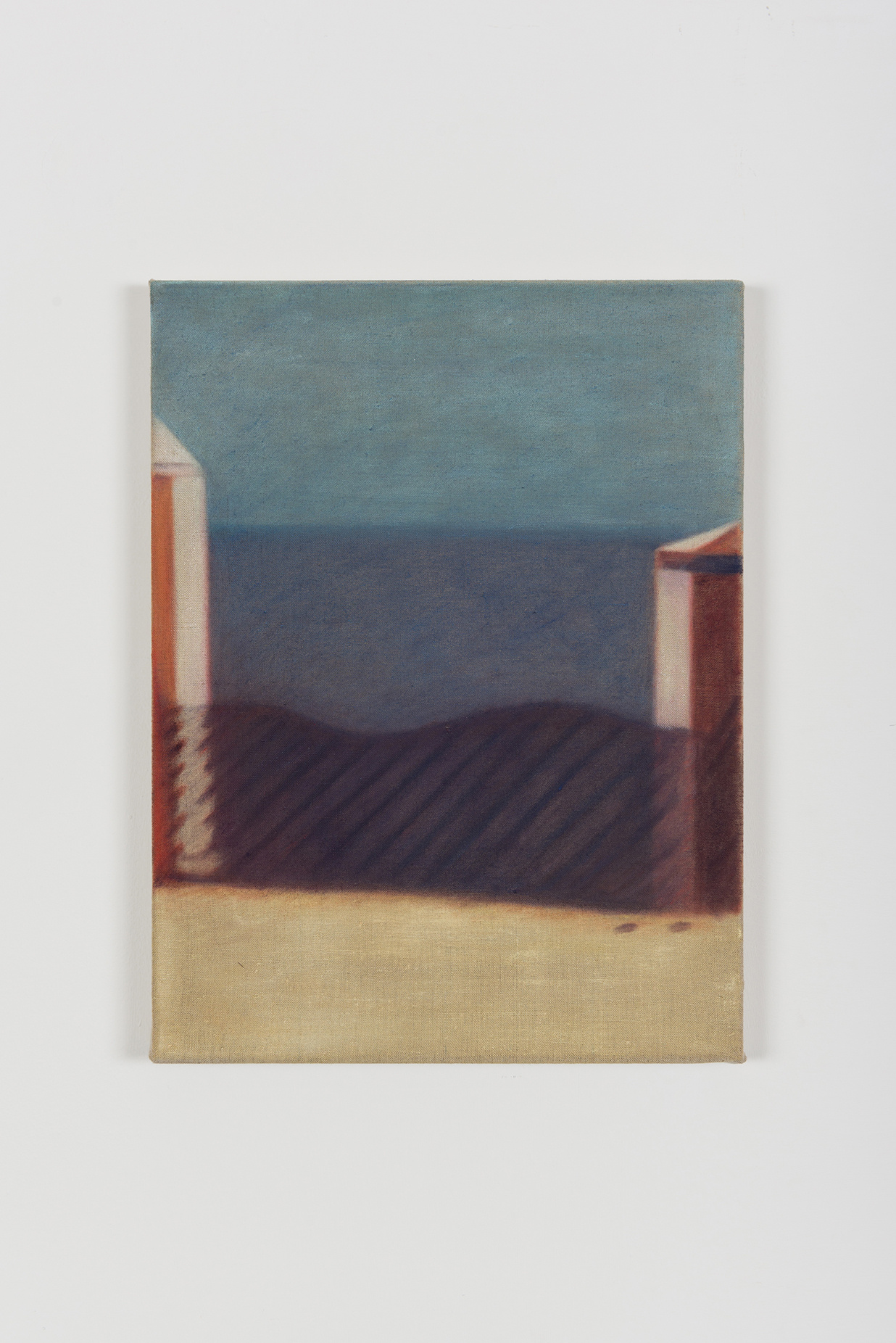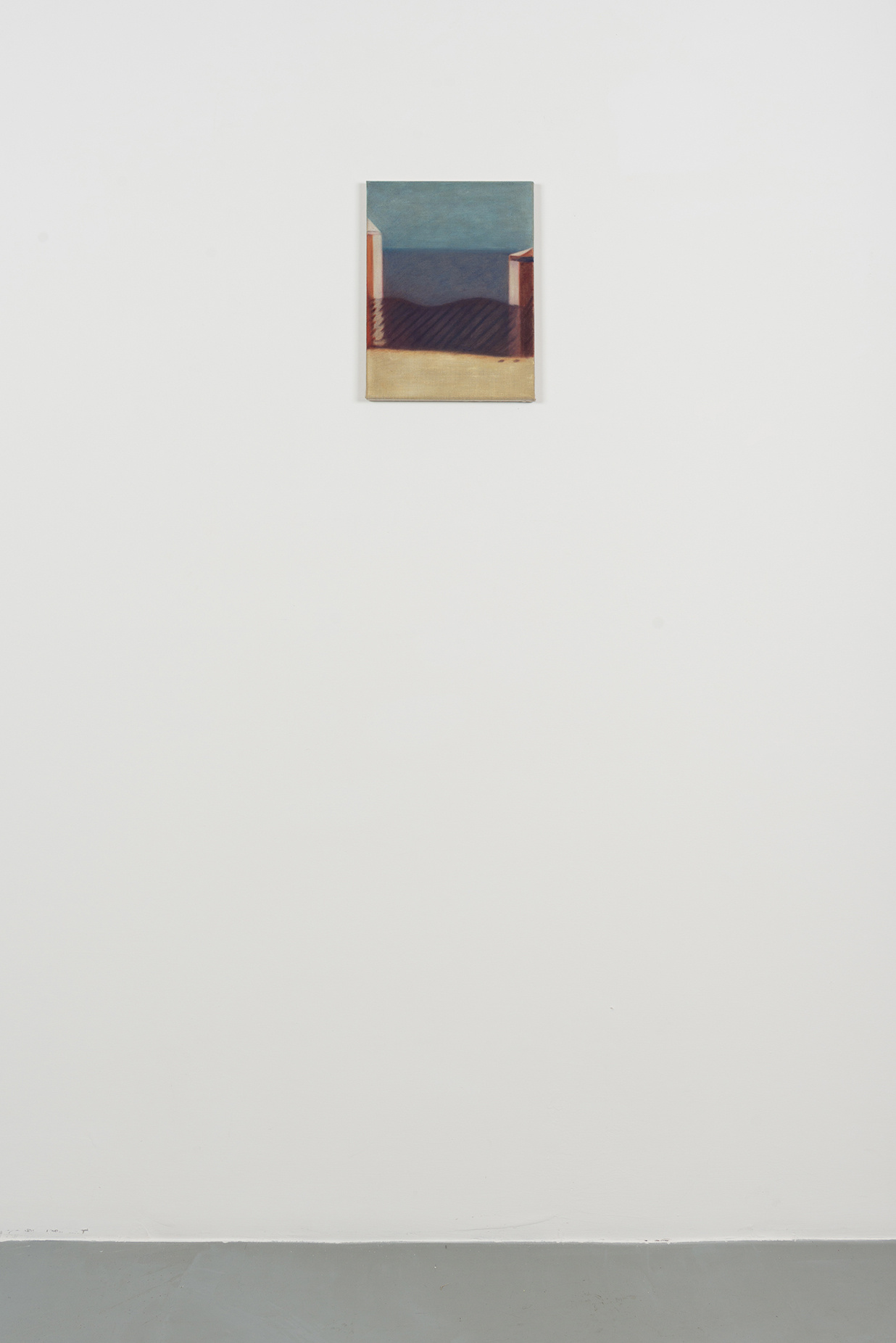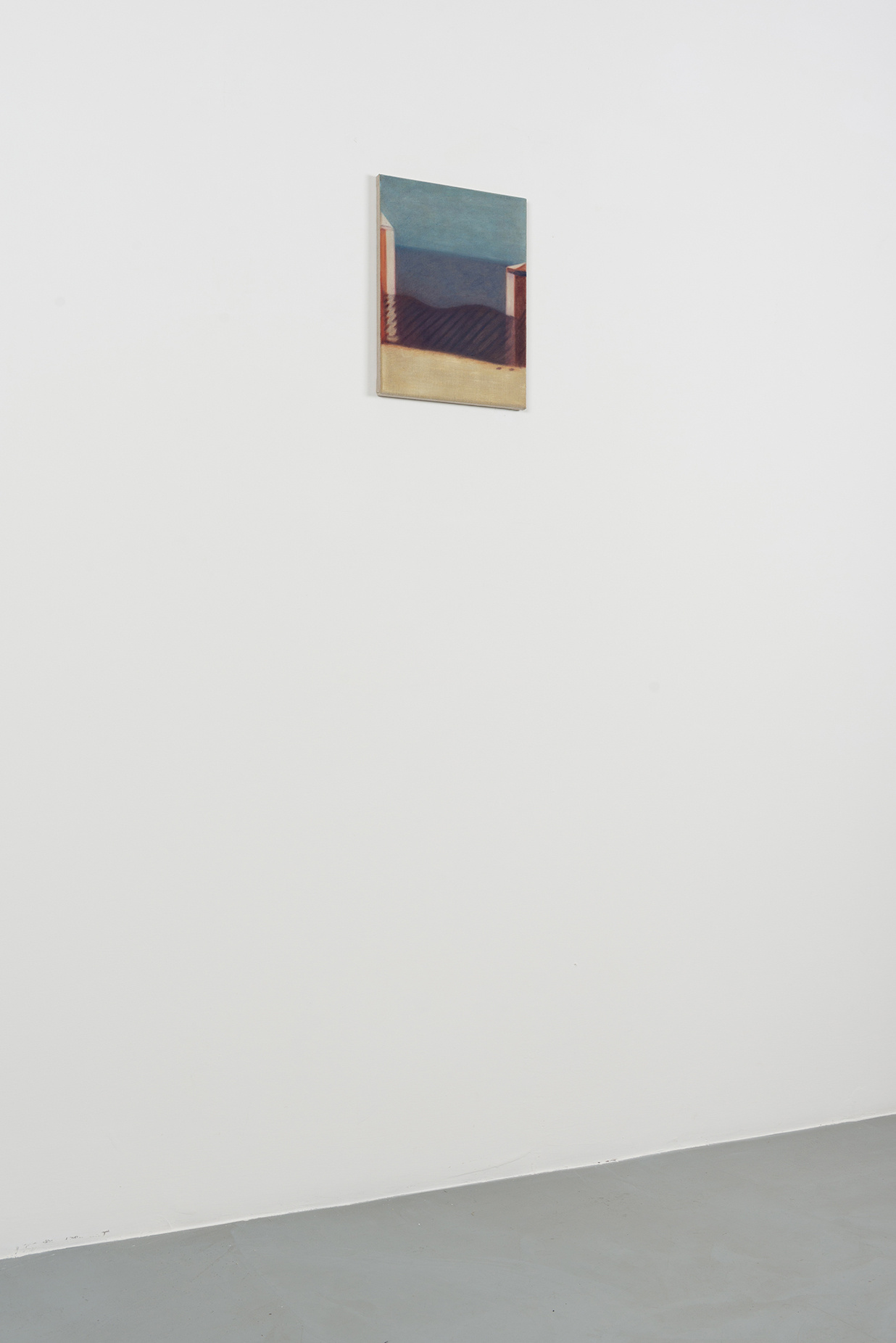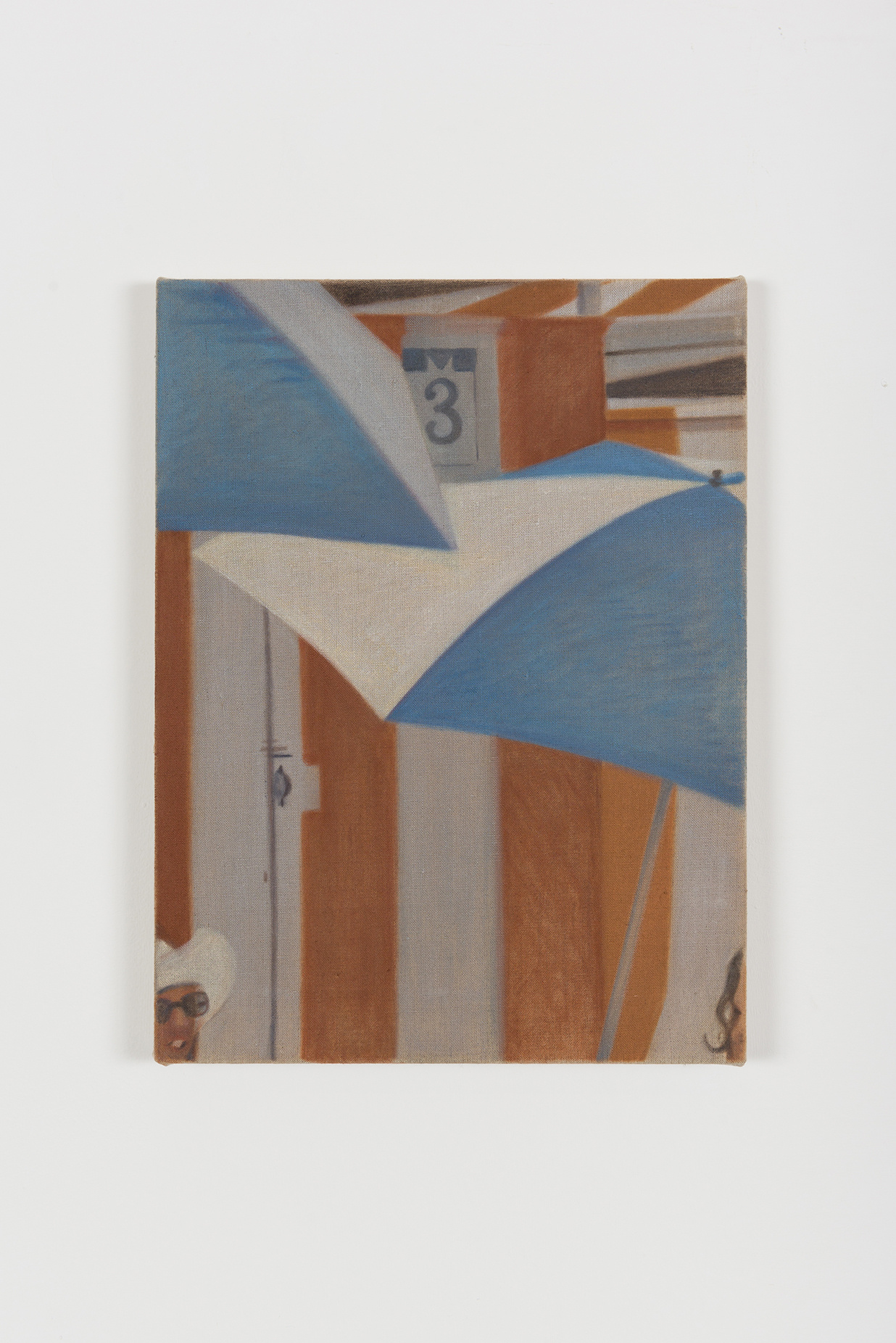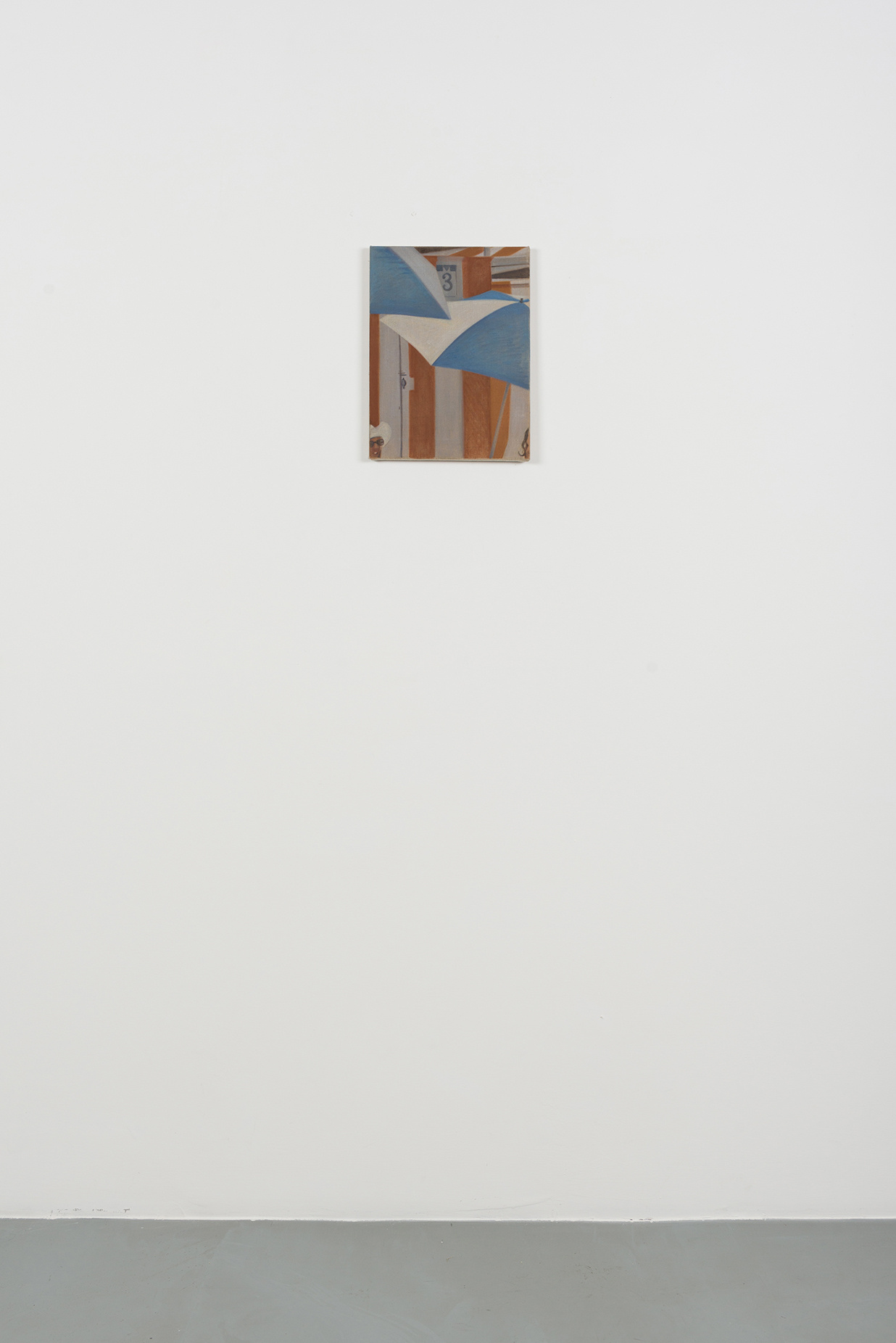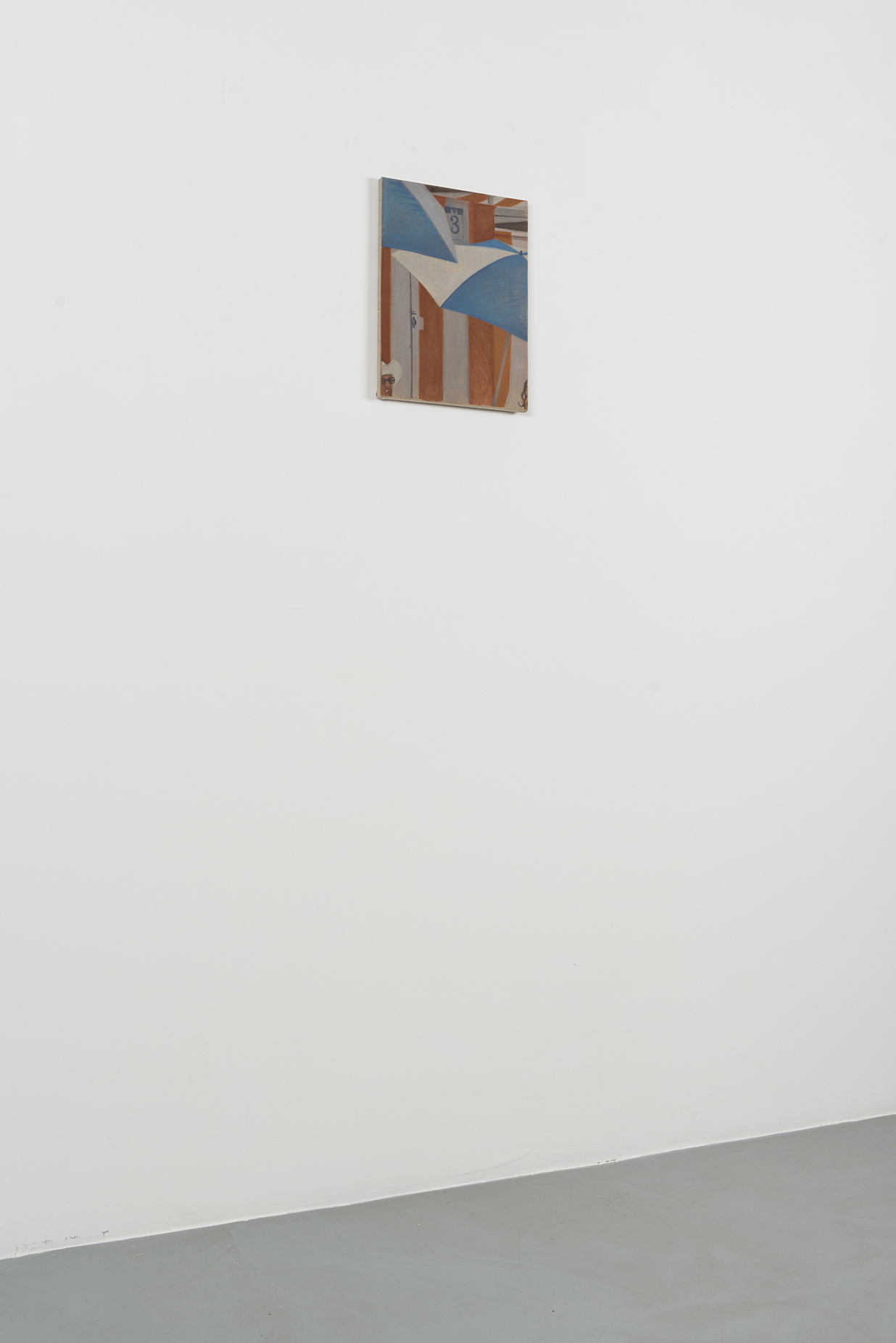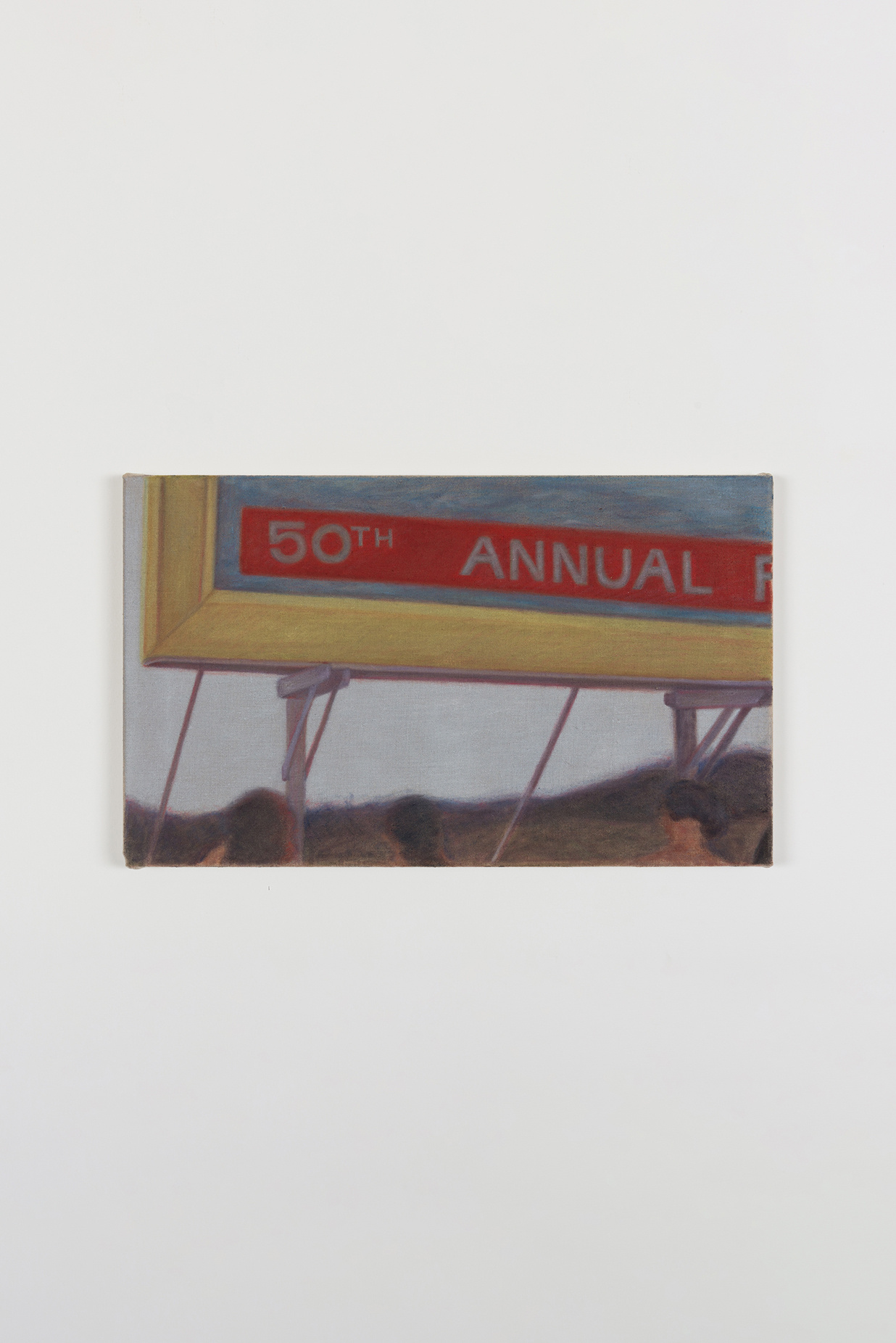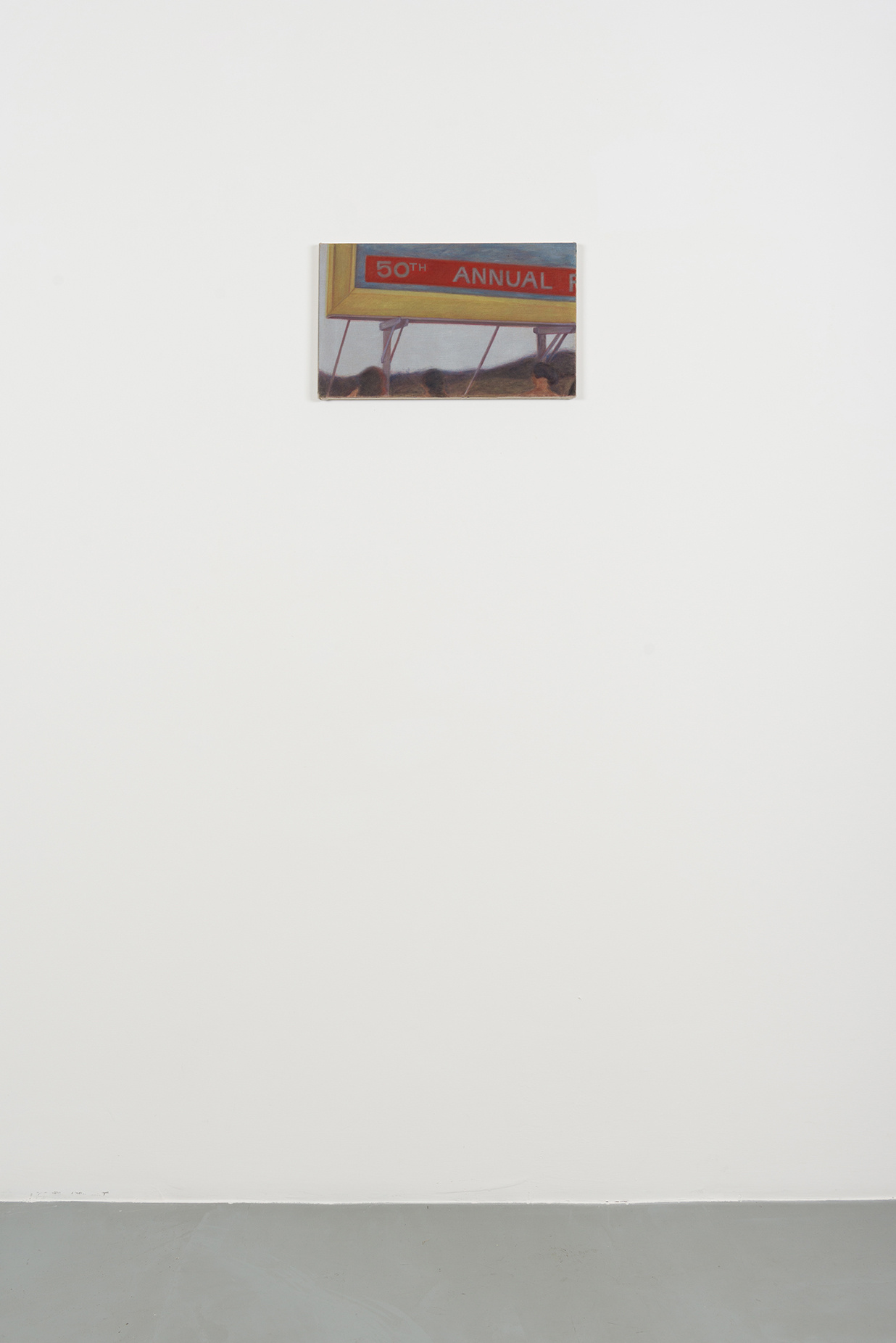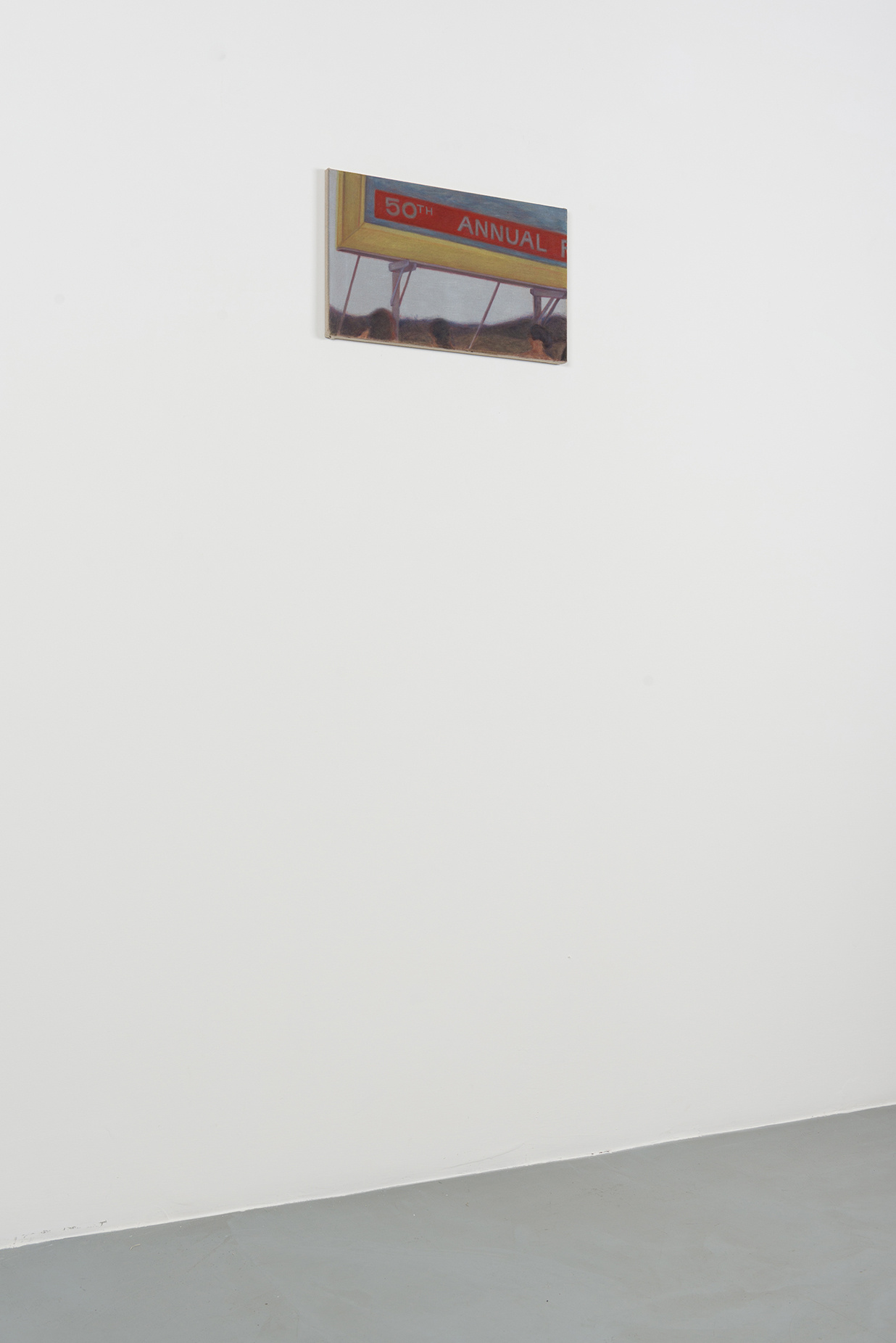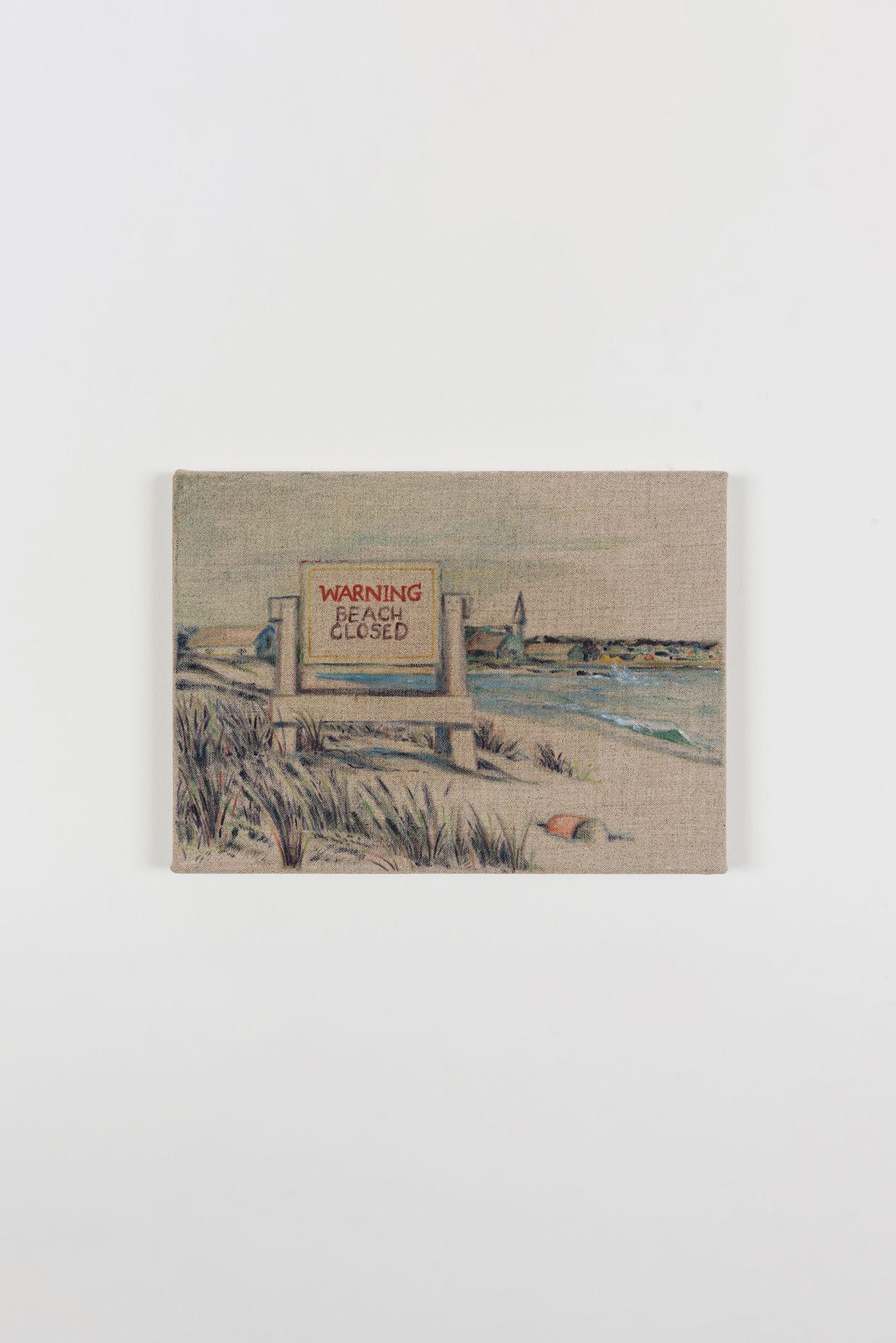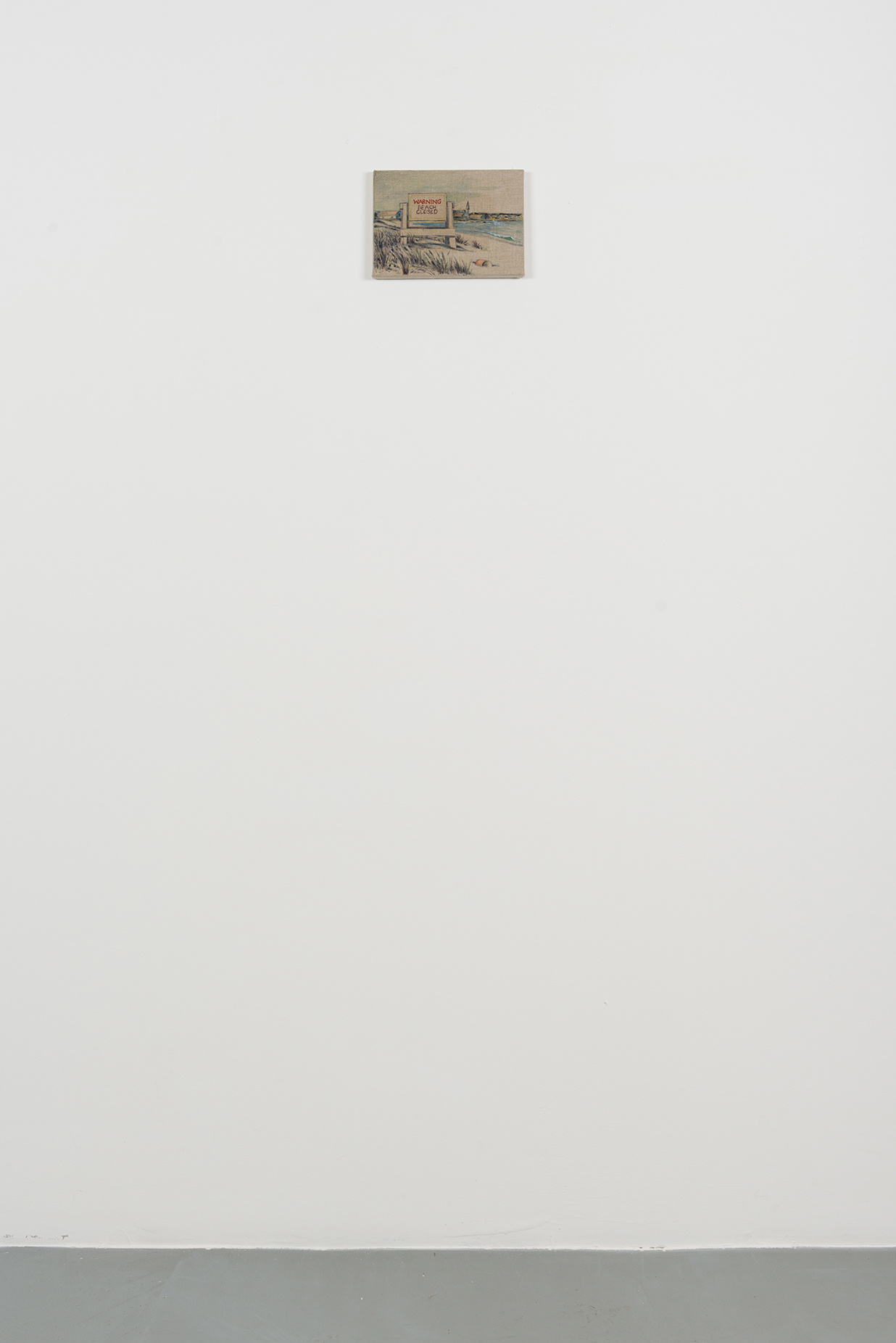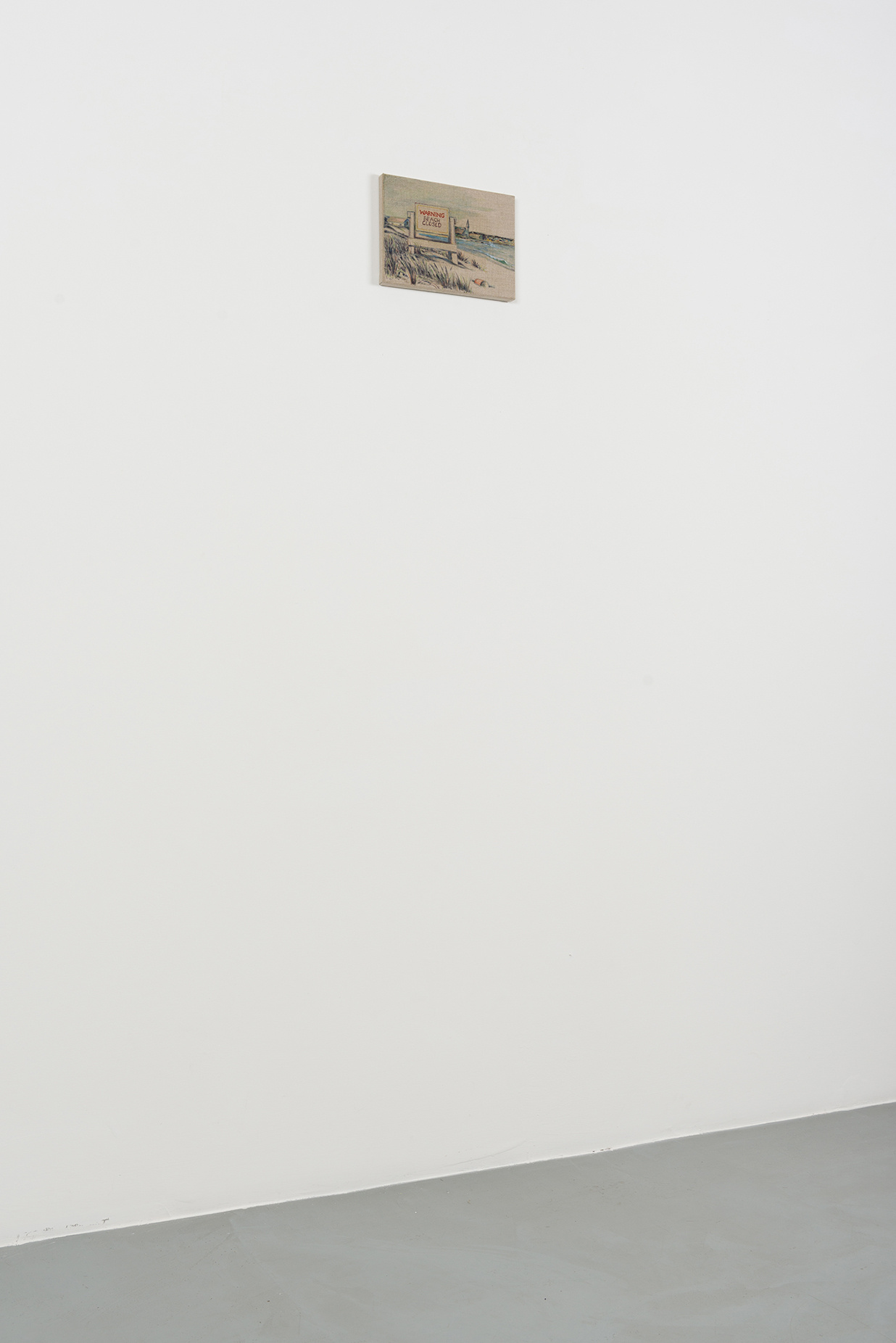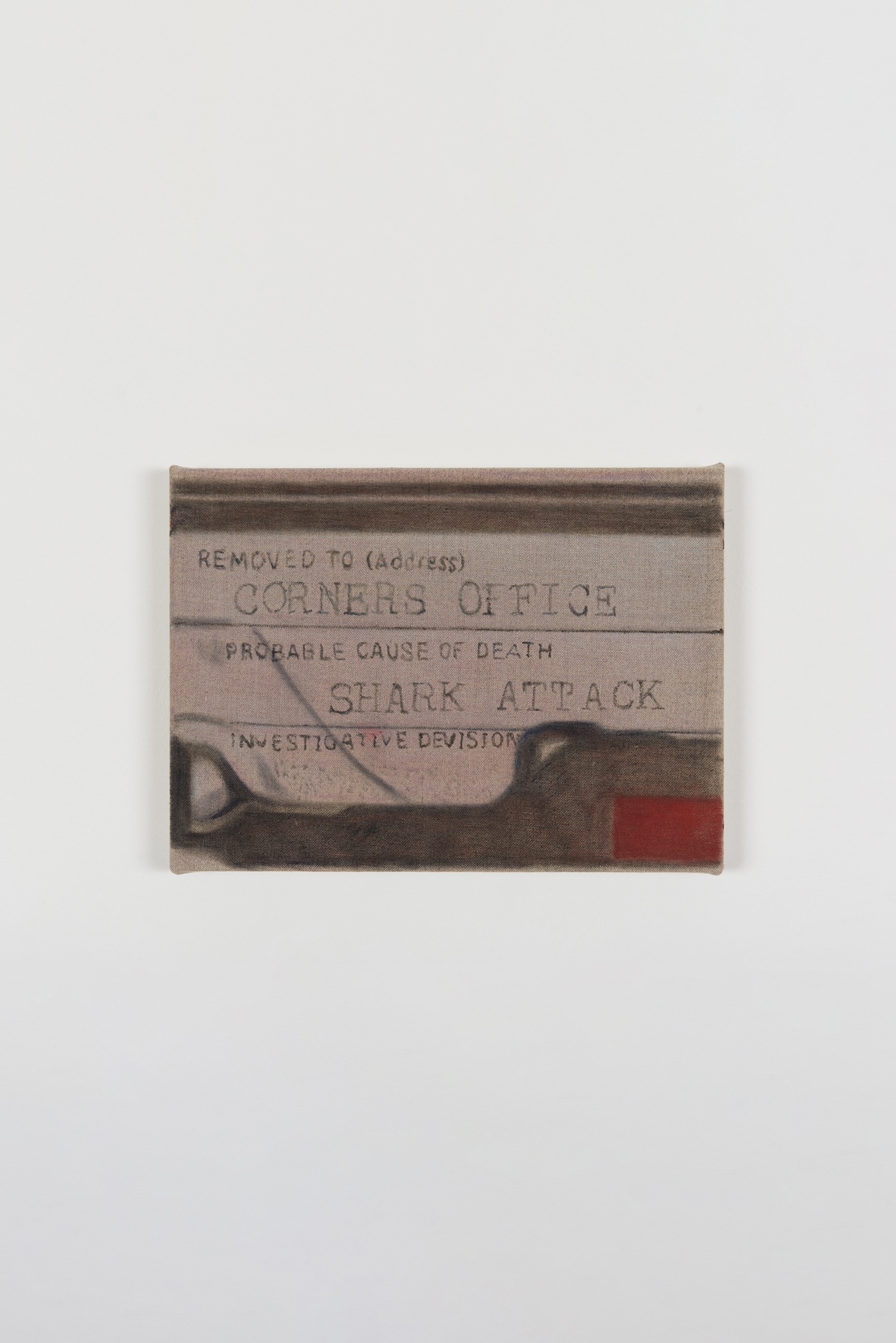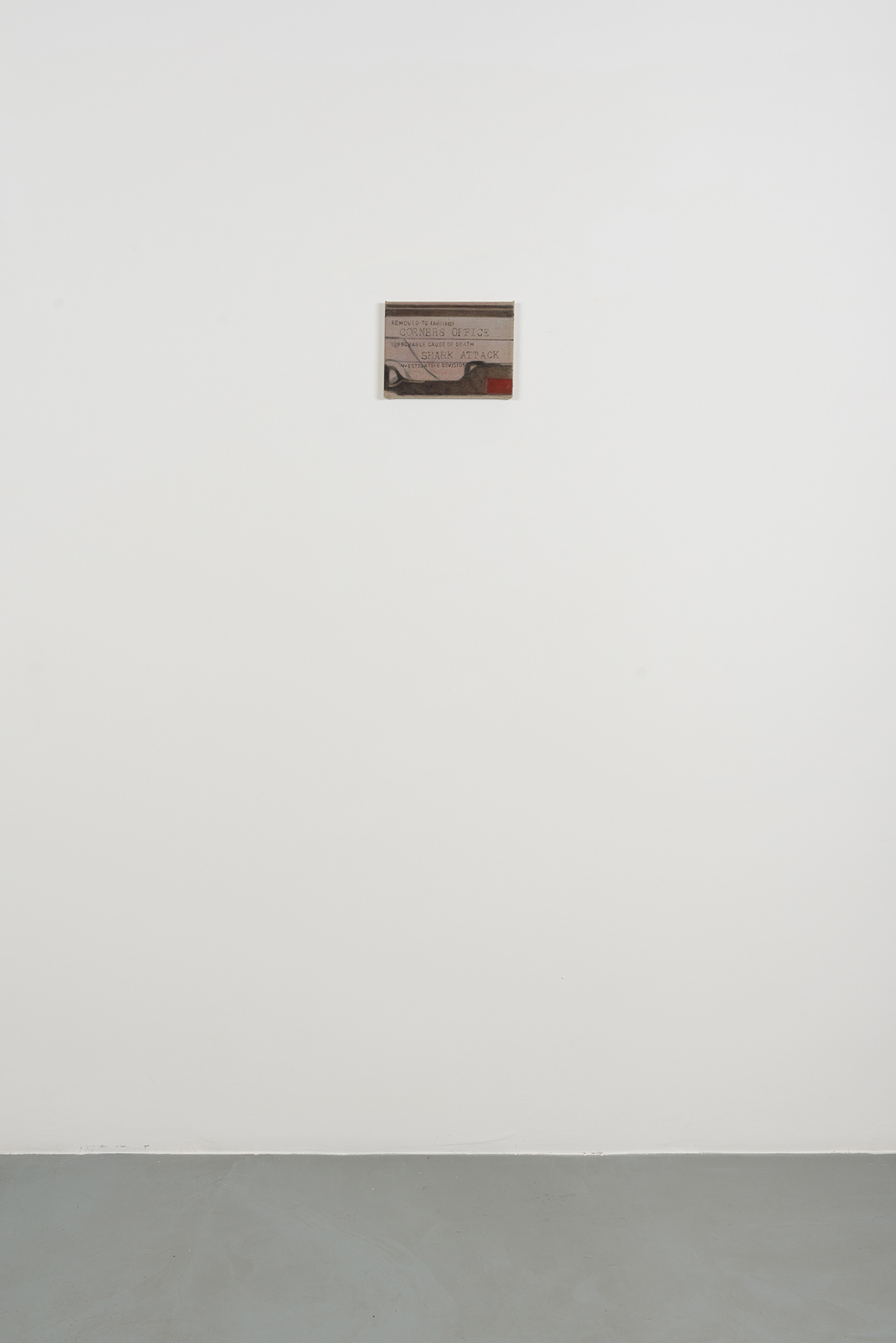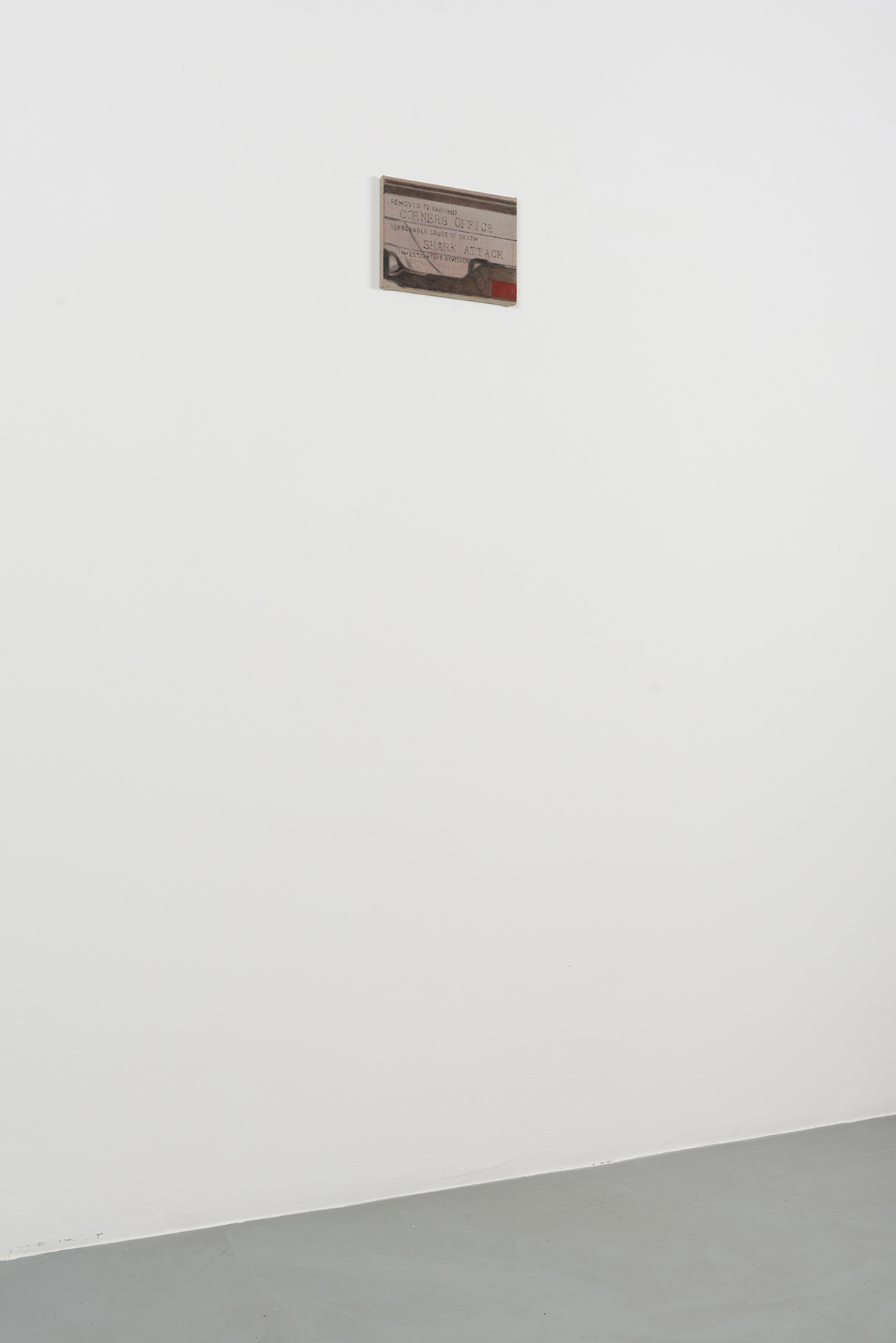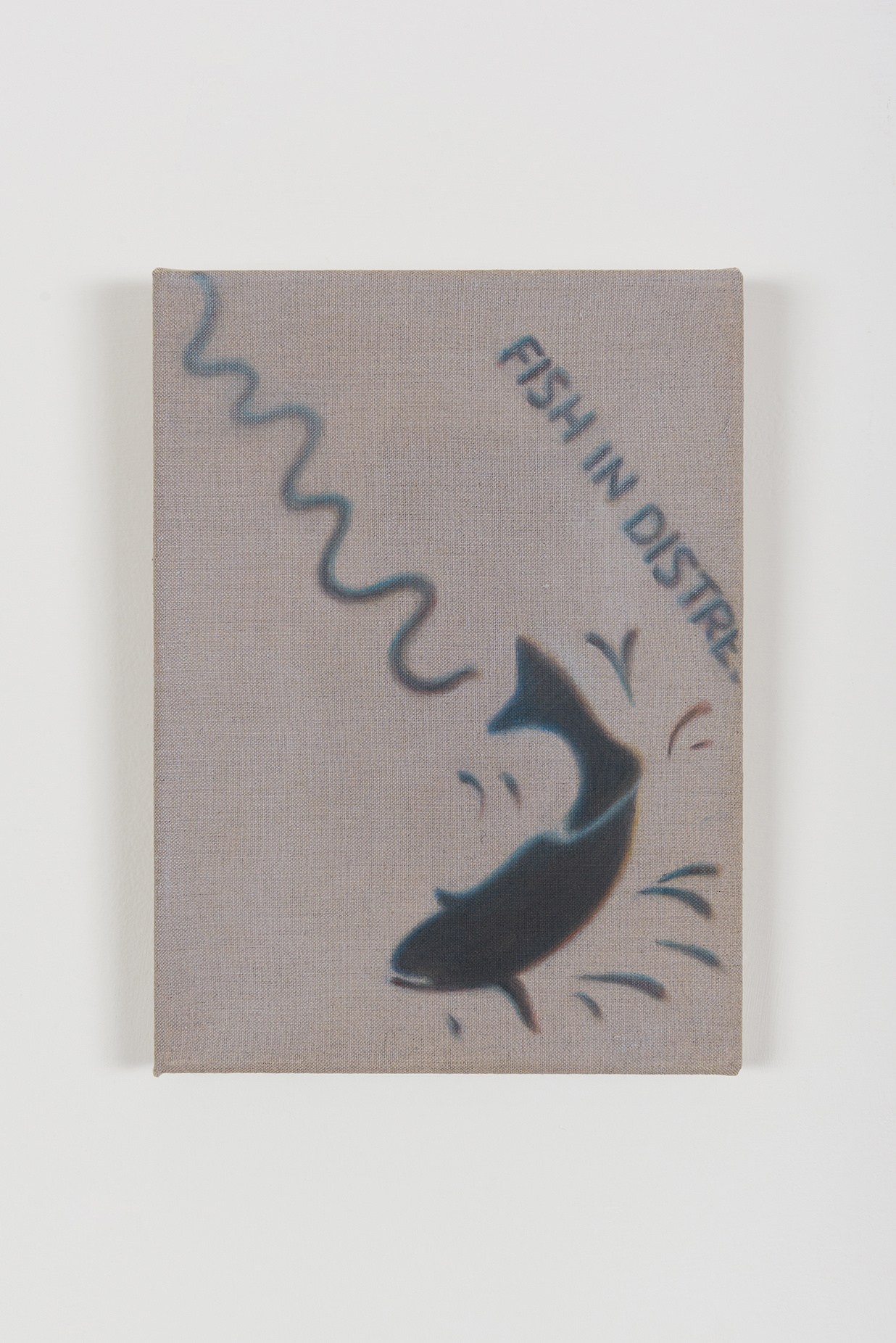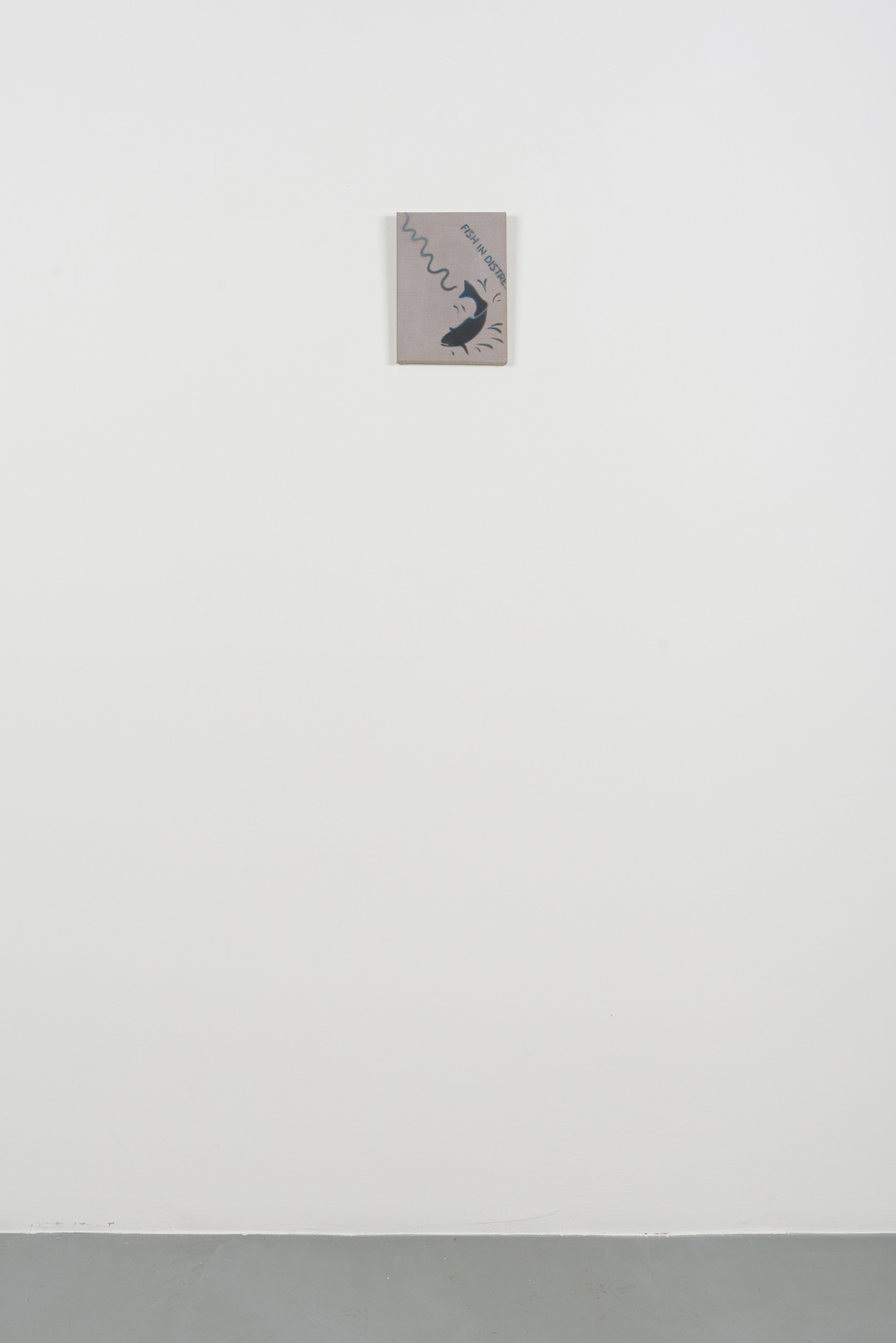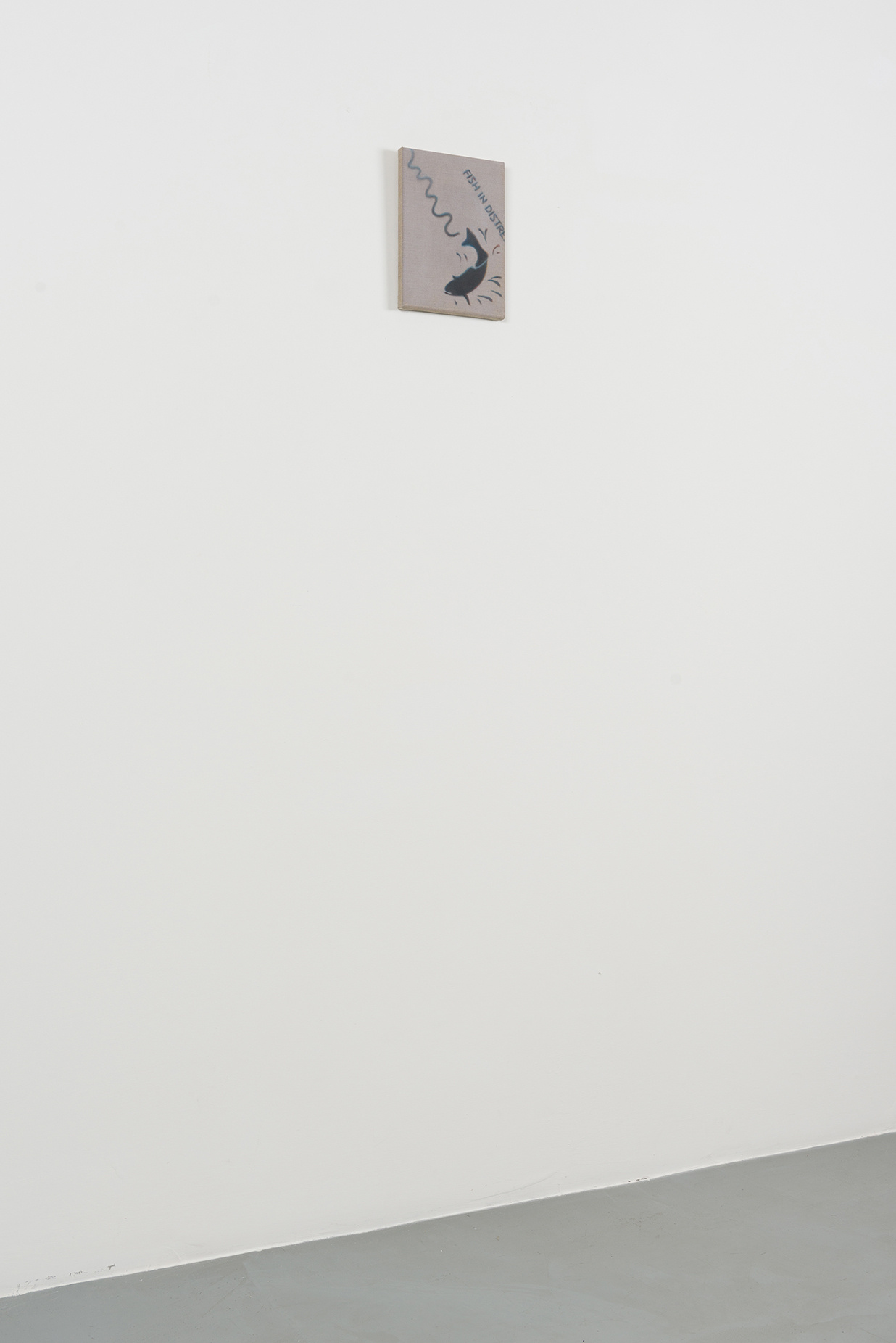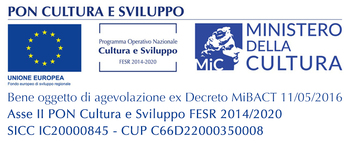Lee decided to take one image of one cut scene of one iconic movie as a starting point: a shark head coming over a tide in the sea facing swimmers next to a beach. The legendary Jaws (1975) directed by Steven Spielberg.
They (note: the artist) came with the strong concept of reinterpreting scenes or stills from the movie set while revisiting classical, modern and contemporary art history: Giotto di Bondone (1267-1337), Giorgio de Chirico (1888-1978), Alex Katz (1927) or David Hockney (1937), among others. The idea is not for the visitors to guess about a trivial “who’s who” quiz but more for Lee to question the core of their painting practice while challenging the audience with a dual-layered reading that invites viewers to engage with the artwork on multiple levels, questioning both the historical medium of painting and the narratives it conveys.
At the heart of the exhibition lies a rich narrative that revolves around the cult status of Jaws and the collective unconscious associated with cinematic mythology. The “sea monster”; the shark – a ubiquitous symbol recognized across cultures – offers a compelling entry point for discussions about the sea, the coast, and the human experience of leisure and danger. Lee’s choice to centre their work around this emblematic image allows them to navigate complex themes that resonate with audiences on a universal scale. Not to mention that the shark per se isn’t the fear, it is embodying the concept of an “invisible shadow” lingering over our heads – the weight of our history, our mortality and the stories we weave around what lies just out of sight.
Something that is also very specific with this exhibition is that Lee first stumbled upon the black and white image of the cut scene online as a teenager, before ever having seen the film. Technology, then, the internet (and its immediate gratification, it’s promise of all knowledge or “all access”), is as much of a backdrop to the work as the history of painting. It’s referenced in the scrambled pixels recreated in gotcha!, an exclamation that is both of someone caught and fooled, or the title GRWM (or “get ready with me”), a common acronym online for videos of makeup routines accompanied by personal stories, repurposed here at a moment of danger.
Lee’s self-described obsession with that one image (as its repetition demonstrates in the humorously homophonous J’Adore) is perhaps a product of the digital age, which pledges “more, faster, now”, and the frustration we subsequently feel when we’re denied, just as the audience of Jaws is repeatedly denied a clear view of the shark which instead appears in splashes and glimpses. Lee says of the image: «That moment, that’s the whole of existence right there, that split second when you’re here, before you’re gone. Swallowed whole, consumed, and nothing to show for it.» A bleak interpretation which is simultaneously contrasted with the warmth of enthusiastic collection, rounding out the human experience.
As Lee navigates the complexities of contemporary culture, they deftly balance their inspiration from diverse sources with a dialogue rooted in art history. Uncut is an invitation to explore the intricate relationship between image, memory, and the evolving landscape of artistic expression in the digital age. Through the work, Lee reaffirms the enduring power of visual storytelling and its place within the broader narrative of contemporary art.
Over time, and alongside an inspiration fed by multiple mediums, Grace Lee is part of the post-internet generation while finding a spontaneous balance with material from the past and exploring historical and cultural tradition. (VVB)
Read less
Lee decided to take one image of one cut scene of one iconic movie as a starting point: a shark head coming over a tide in the sea facing swimmers next to a beach. The legendary Jaws (1975) directed by Steven Spielberg.
They (note: the artist) came with the strong concept of reinterpreting scenes or stills from the movie set while revisiting classical, modern and contemporary art history: Giotto di Bondone (1267-1337), Giorgio de Chirico (1888-1978), Alex Katz (1927) or David Hockney (1937), among others. The idea is not for the visitors to guess about a trivial “who’s who” quiz but more for Lee to question the core of their painting practice while challenging the audience with a dual-layered reading that invites viewers to...
Read more
